(s)education
original online course
on photography
original online course
on photography
by jurij treskow
P R E V I E W
gain limited access ( 5% of all materials ) below to the course
and get a taste of what awaits you
and get a taste of what awaits you
To understand an artist's creative output and vision, it's crucial to explore their biography. Their personal experiences and background can provide context and inspiration for one's own artistic practice.
1.
FIRST STEPS
PHOTO-SHOOLS & ASSISTING
2.
BERLIN
WORK IN TEAM
FIRST EDITORIAL & CAMPAIGN & LOOK-BOOK
MOSCOW
3.
PARIS
MODEL TESTS
MAGAZINES & CELEBRITIES
MUSE
4.
PHOTO AGENCIES
5.
USA
EUROPE
1.
FIRST STEPS
PHOTO-SHOOLS & ASSISTING
- what initially sparked my interest in photography
- biography
- first shootings & mentor
- moving to berlin
- photo schools
- why I've never assisted
2.
BERLIN
WORK IN TEAM
FIRST EDITORIAL & CAMPAIGN & LOOK-BOOK
MOSCOW
- work in team
- first breakthrough
- influences
- first printed editorial & campaign & look-book
- own photo studio
- dark aspects in my photography
3.
PARIS
MODEL TESTS
MAGAZINES & CELEBRITIES
MUSE
- moving to paris
- my first exhibition in minsk in 2010
- model tests for agencies in paris
- my initial experiments with nudes
- stepping into the high fashion industry
- one particular muse that had a profound impact on my photography
- shootings for magazines
- celebrities
4.
PHOTO AGENCIES
- factory 311
- art board
- walter schupfer
- the industry
- onirim
- vitals
5.
USA
EUROPE
- moving to nyc in 2015
- restart
- how nyc revealed both strengths and weaknesses
- moving to los angeles in 2020
- miami 2022
- milan & london
01. UNIT / INTRO
Focus on my personal journey as a photographer. You will learn about the development of my interest in photography and the challenges and opportunities I encountered along the way. The impact of the decisions I made and their consequences.
First photo shoots and exploring personal style, entering the fashion industry, initial magazine features and commercial projects. Collaborations with model and photo agencies.
How different cities influenced my art and worldview.
01. UNIT / THE VERY BEGINNING
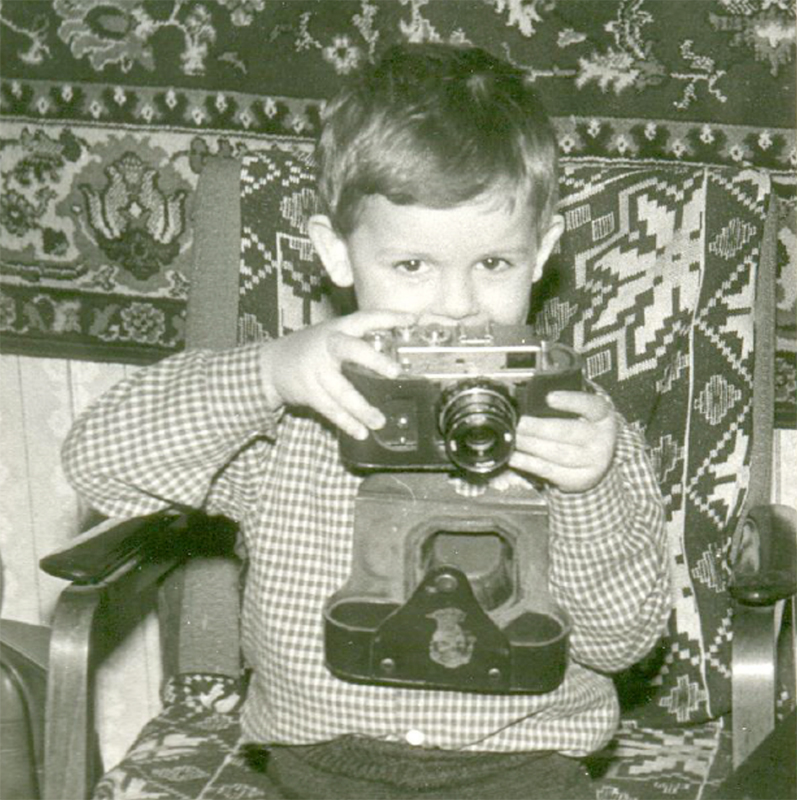
This picture was taken by my grandfather in Polotsk, Belarus when I was around 3 years old.
During the 70s and 80s, it was common for people to have a deep interest in photography, including my grandfather, who, despite serving in the military, shared this passion.
He had a large collection of various cameras at home and often took pictures of his family, friends, and anything else that interested him. Over time, this became a photographic diary of his life.
I still remember the red light coming from the bathroom where he developed the films himself. As a child, it was such a mesmerizing and magical experience for me.
Thanks to my grandfather, we now have countless photos in our family archives. These images still play an important role in our lives, helping us to preserve memories of the past and remember our friends and relatives and our lives back then.
Most of the photos were in black and white, which may be one reason why I developed a special affinity for black and white photography. Who knows!
During the 70s and 80s, it was common for people to have a deep interest in photography, including my grandfather, who, despite serving in the military, shared this passion.
He had a large collection of various cameras at home and often took pictures of his family, friends, and anything else that interested him. Over time, this became a photographic diary of his life.
I still remember the red light coming from the bathroom where he developed the films himself. As a child, it was such a mesmerizing and magical experience for me.
Thanks to my grandfather, we now have countless photos in our family archives. These images still play an important role in our lives, helping us to preserve memories of the past and remember our friends and relatives and our lives back then.
Most of the photos were in black and white, which may be one reason why I developed a special affinity for black and white photography. Who knows!
1.1 EXERCISE - INITIAL INTEREST
Take a moment to recall and remind yourself of your initial motivations and interest in photography.
How did you first become interested in photography? What inspired and motivated you? Reflect on your initial impressions and emotions when you started pursuing photography. What events, people, other photographers' works, or photographic projects sparked your interest and desire to try your hand at this art form?
Allocate some time for reflection and jot down your thoughts.
The purpose is to help you recall your initial motivations and inspiration for photography, to understand and evaluate your creative journey, as well as reignite the initial flame and passion that propelled you into this captivating exploratory and creative endeavor.
How did you first become interested in photography? What inspired and motivated you? Reflect on your initial impressions and emotions when you started pursuing photography. What events, people, other photographers' works, or photographic projects sparked your interest and desire to try your hand at this art form?
Allocate some time for reflection and jot down your thoughts.
The purpose is to help you recall your initial motivations and inspiration for photography, to understand and evaluate your creative journey, as well as reignite the initial flame and passion that propelled you into this captivating exploratory and creative endeavor.
01. UNIT INTRO / ART CLASS IN GERMANY

At the beginning, art didn't play a significant role in my life. I had no plans to become a photographer, nor did I consider creativity as a source of income. My attention was focused on studying chemistry and mathematics in high school, first in Brest and then in a gymnasium after I moved to Germany. Later, I enrolled in the economics faculty, and for the first two years, I diligently pursued my studies at the university.
The first spark came in the gymnasium during an art lesson, where the topic was photography. Over the course of a few weeks, we learned the basics of photography, took pictures on film, and in the end, we had to present a collage made from our photographs.
I was captivated by the process of shooting on film, developing it in the school lab, and creating photo collages. Although the film processing was slow and labor-intensive, I remembered how my grandfather used to do the same when I was a very young child. However, the true magic of film photography didn't fully unfold for me at that time.
Nevertheless, I completed my project - a collage that brought together photographs depicting various states and manifestations of nature, highlighting the interconnectedness of everything in the natural world.
When I presented my work in class, my teacher was very impressed with the idea and its execution. This positive feedback gave me the motivation to continue taking photos and see what would come out of it.
The first spark came in the gymnasium during an art lesson, where the topic was photography. Over the course of a few weeks, we learned the basics of photography, took pictures on film, and in the end, we had to present a collage made from our photographs.
I was captivated by the process of shooting on film, developing it in the school lab, and creating photo collages. Although the film processing was slow and labor-intensive, I remembered how my grandfather used to do the same when I was a very young child. However, the true magic of film photography didn't fully unfold for me at that time.
Nevertheless, I completed my project - a collage that brought together photographs depicting various states and manifestations of nature, highlighting the interconnectedness of everything in the natural world.
When I presented my work in class, my teacher was very impressed with the idea and its execution. This positive feedback gave me the motivation to continue taking photos and see what would come out of it.
01. UNIT INTRO / FIRST MENTOR

Olga was one of the first professional models I worked with in Brest, and she later became my mentor in fashion photography.
During our photo shoots in Brest, she would come prepared with a variety of outfits, different makeup and hair ideas, and even location suggestions that would complement each look. She also had a collection of references and mood boards for lighting, poses, and different compositions. This level of preparation was new to me.
After our shoots, Olga would sit down with me and help me with the final selection of images. She explained the basics of fashion photography and stressed the importance of learning how to shoot clothes and how to work with and direct models.
With her guidance, my photographs improved significantly.
She also introduced me to various fashion magazines and photographers to study, which encouraged me to take photography more seriously and to conduct more research on photography and fashion in general.
From this encounter I understood that it's one of the key is to find someone who knows their stuff and has experience in the areas you want to grow in. They should also be cool with sharing their knowledge, giving you pointers, and giving you feedback if even it could hurt.
During our photo shoots in Brest, she would come prepared with a variety of outfits, different makeup and hair ideas, and even location suggestions that would complement each look. She also had a collection of references and mood boards for lighting, poses, and different compositions. This level of preparation was new to me.
After our shoots, Olga would sit down with me and help me with the final selection of images. She explained the basics of fashion photography and stressed the importance of learning how to shoot clothes and how to work with and direct models.
With her guidance, my photographs improved significantly.
She also introduced me to various fashion magazines and photographers to study, which encouraged me to take photography more seriously and to conduct more research on photography and fashion in general.
From this encounter I understood that it's one of the key is to find someone who knows their stuff and has experience in the areas you want to grow in. They should also be cool with sharing their knowledge, giving you pointers, and giving you feedback if even it could hurt.
01. UNIT INTRO / FIRST BREAKTHROUGH
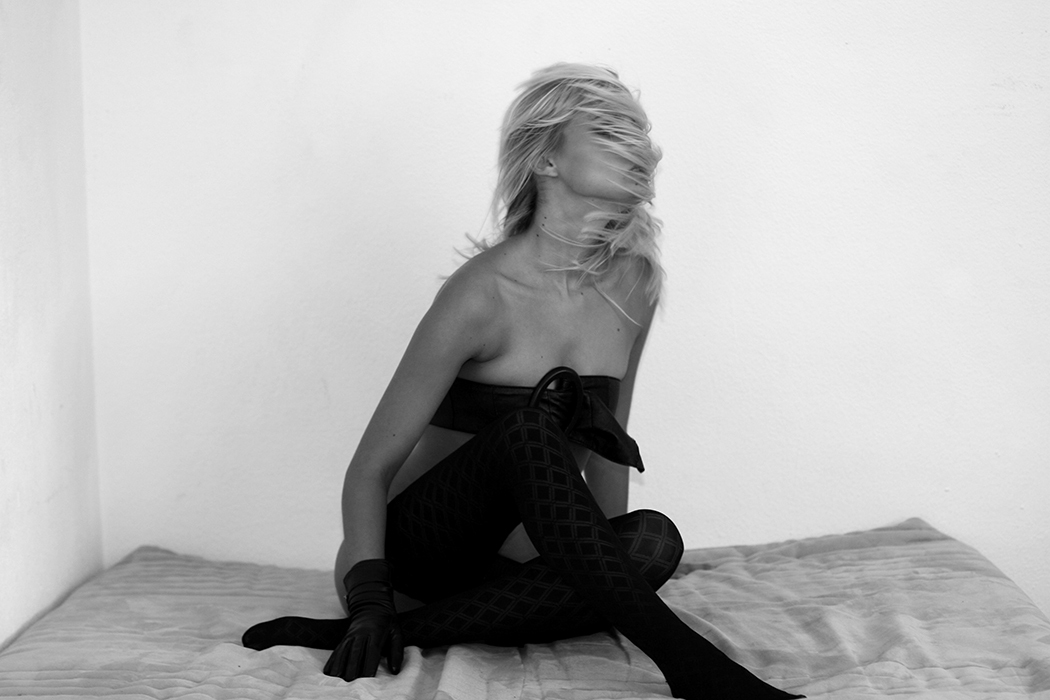

In 2007, I did my first photoshoot with a model named Helena. I found her profile on the model-kartei website and asked if she would be interested in a collaborative shoot. Helena was already an experienced model with an excellent portfolio.
A few days after I sent her a mood board with some ideas, she came to Freiburg. I was incredibly excited about the upcoming shoot. Helena's posing skills, ability to transform, and change moods inspired me throughout the five-hour session, although it felt like only five minutes had passed.
As I reviewed the photos we took during the shoot, I noticed something new and exciting emerging in my images - a new style, the first glimpses of "femme fatale" that I later discovered and developed over the years.
The photos showcased a woman who was strong, confident, and played with her sensuality in the frame. At that time, I didn't fully grasp the significance of this breakthrough, but today, looking back at these shots, I see how it became a pivotal moment in my career and the development of my own vision and style.
A few days after I sent her a mood board with some ideas, she came to Freiburg. I was incredibly excited about the upcoming shoot. Helena's posing skills, ability to transform, and change moods inspired me throughout the five-hour session, although it felt like only five minutes had passed.
As I reviewed the photos we took during the shoot, I noticed something new and exciting emerging in my images - a new style, the first glimpses of "femme fatale" that I later discovered and developed over the years.
The photos showcased a woman who was strong, confident, and played with her sensuality in the frame. At that time, I didn't fully grasp the significance of this breakthrough, but today, looking back at these shots, I see how it became a pivotal moment in my career and the development of my own vision and style.
"The Creative Habit: Learn It and Use It for Life" by Twyla Tharp, a renowned choreographer and dancer. In the book, Tharp shares her insights and practices for cultivating creativity and developing a sustainable creative process. She emphasizes the importance of routine and discipline in the creative process, and provides practical exercises and strategies for overcoming creative blocks and developing new ideas. Tharp draws from her own experiences as a dancer and choreographer, as well as from interviews with artists and professionals from various creative fields, to offer a comprehensive guide to cultivating creativity. The book has become a popular resource for artists, writers, and creative professionals looking to improve their creative process and develop sustainable habits for continued success.
"Art and Fear: Observations on the Perils (and Rewards) of Artmaking" is a book written by David Bayles and Ted Orland. The book explores the challenges and fears that artists face in the creative process and offers insights and advice on how to overcome them. The authors draw from their own experiences and observations, as well as from interviews with artists from various disciplines, to explore topics such as the fear of failure, the role of criticism, and the creative process itself. The book has become a popular resource for artists and creative professionals, providing valuable insights and inspiration for anyone pursuing a career in the arts.
"The War of Art: Break Through the Blocks and Win Your Inner Creative Battles" by Steven Pressfield. In the book, Pressfield identifies the various forms of resistance that artists and creatives face in the pursuit of their craft, such as fear, self-doubt, and procrastination. He offers insights and practical strategies for overcoming these obstacles and tapping into one's creative potential. The book is written in a no-nonsense style, providing readers with actionable advice and encouraging them to take action to overcome creative blocks. The War of Art has become a popular resource for artists, writers, and creatives of all kinds, helping them to identify and overcome the obstacles that stand in the way of their creative success.
"Big Magic: Creative Living Beyond Fear" is a self-help book by Elizabeth Gilbert about overcoming fear and self-doubt in order to pursue creativity. Gilbert encourages readers to embrace curiosity, take risks, and be willing to make mistakes. The book includes personal anecdotes and practical advice on cultivating a creative practice and dealing with obstacles.
"The Artist's Way: A Spiritual Path to Higher Creativity" is a self-help book by Julia Cameron that offers a twelve-week program to help readers rediscover their creativity and overcome creative blocks. The program includes exercises such as journaling, artist dates, and creative play, and is designed to cultivate self-awareness and self-confidence. The book includes personal anecdotes and success stories from other creatives who have used the program.
+
"The Practice: Shipping Creative Work" by Seth Godin
"The Art Spirit" by Robert Henri
"Steal Like an Artist: 10 Things Nobody Told You About Being Creative" by Austin Kleon
"Art/Work: Everything You Need to Know (and Do) As You Pursue Your Art Career" by Heather Darcy Bhandari and Jonathan Melber
"The Art of Possibility: Transforming Professional and Personal Life" by Rosamund Stone Zander and Benjamin Zander.
"Art and Fear: Observations on the Perils (and Rewards) of Artmaking" is a book written by David Bayles and Ted Orland. The book explores the challenges and fears that artists face in the creative process and offers insights and advice on how to overcome them. The authors draw from their own experiences and observations, as well as from interviews with artists from various disciplines, to explore topics such as the fear of failure, the role of criticism, and the creative process itself. The book has become a popular resource for artists and creative professionals, providing valuable insights and inspiration for anyone pursuing a career in the arts.
"The War of Art: Break Through the Blocks and Win Your Inner Creative Battles" by Steven Pressfield. In the book, Pressfield identifies the various forms of resistance that artists and creatives face in the pursuit of their craft, such as fear, self-doubt, and procrastination. He offers insights and practical strategies for overcoming these obstacles and tapping into one's creative potential. The book is written in a no-nonsense style, providing readers with actionable advice and encouraging them to take action to overcome creative blocks. The War of Art has become a popular resource for artists, writers, and creatives of all kinds, helping them to identify and overcome the obstacles that stand in the way of their creative success.
"Big Magic: Creative Living Beyond Fear" is a self-help book by Elizabeth Gilbert about overcoming fear and self-doubt in order to pursue creativity. Gilbert encourages readers to embrace curiosity, take risks, and be willing to make mistakes. The book includes personal anecdotes and practical advice on cultivating a creative practice and dealing with obstacles.
"The Artist's Way: A Spiritual Path to Higher Creativity" is a self-help book by Julia Cameron that offers a twelve-week program to help readers rediscover their creativity and overcome creative blocks. The program includes exercises such as journaling, artist dates, and creative play, and is designed to cultivate self-awareness and self-confidence. The book includes personal anecdotes and success stories from other creatives who have used the program.
+
"The Practice: Shipping Creative Work" by Seth Godin
"The Art Spirit" by Robert Henri
"Steal Like an Artist: 10 Things Nobody Told You About Being Creative" by Austin Kleon
"Art/Work: Everything You Need to Know (and Do) As You Pursue Your Art Career" by Heather Darcy Bhandari and Jonathan Melber
"The Art of Possibility: Transforming Professional and Personal Life" by Rosamund Stone Zander and Benjamin Zander.
01. UNIT INTRO / WORKING IN TEAMS

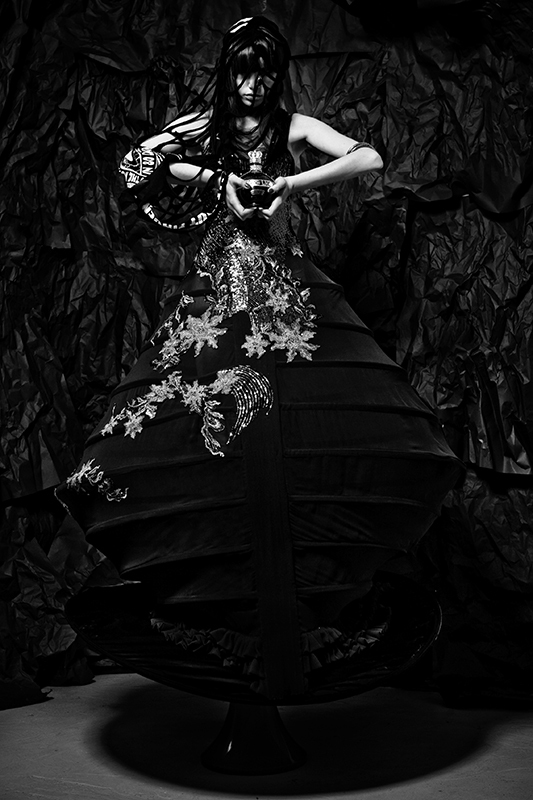
1.2 EXERCISE QUESTION
Define, in your opinion, what are the signs and characteristics of an excellent photographer.
Create a list of these indicators and justify each one. Reflect on aspects such as composition, use of light, ability to convey emotions and stories, technical proficiency, originality, willingness to experiment, the ability to find beauty in simple things, and any other aspect you believe is important for an excellent photographer.
Pay attention to examples of photographers' works that, in your opinion, demonstrate these signs. Describe why their work inspires you and why you consider them to be excellent photographers.
The goal of this task is to help students reflect on the essence of an excellent photographer and identify the qualities and skills that need to be developed to reach that level. It will also help students develop their critical eye for photography and enhance their appreciation for high-quality work, which is an important aspect of their professional growth in photography.
Create a list of these indicators and justify each one. Reflect on aspects such as composition, use of light, ability to convey emotions and stories, technical proficiency, originality, willingness to experiment, the ability to find beauty in simple things, and any other aspect you believe is important for an excellent photographer.
Pay attention to examples of photographers' works that, in your opinion, demonstrate these signs. Describe why their work inspires you and why you consider them to be excellent photographers.
The goal of this task is to help students reflect on the essence of an excellent photographer and identify the qualities and skills that need to be developed to reach that level. It will also help students develop their critical eye for photography and enhance their appreciation for high-quality work, which is an important aspect of their professional growth in photography.
I continued to organize new photo shoots primarily through web platforms for amateur models. In Berlin, I had more model options available to me than I did in Freiburg and Brest.
I also reached out to some modeling agencies in Berlin to arrange shoots with their models. However, the agencies would only send me new faces from their packages.
My next step was to assemble teams. I conducted online research for stylists, makeup artists, and hairdressers in Berlin. I would review their portfolios on their websites, then send messages to the selected artists to discuss collaborating together. I would share mood boards and ideas for potential photo shoots. Not all artists responded to my requests.
After a few months, I was able to build my first organized teams. We would discuss ideas for our photo shoots, select locations, and create mood boards. Stylists would bring outfits, and makeup and hair artists would work on the models' looks. This collaboration transformed my photos, making them appear more like fashion shots and more sophisticated.
I asked many questions about the fashion industry, such as how to start working for magazines, shoot campaigns, and acquire models from modeling agencies. I let my curiosity guide me.
I also reached out to some modeling agencies in Berlin to arrange shoots with their models. However, the agencies would only send me new faces from their packages.
My next step was to assemble teams. I conducted online research for stylists, makeup artists, and hairdressers in Berlin. I would review their portfolios on their websites, then send messages to the selected artists to discuss collaborating together. I would share mood boards and ideas for potential photo shoots. Not all artists responded to my requests.
After a few months, I was able to build my first organized teams. We would discuss ideas for our photo shoots, select locations, and create mood boards. Stylists would bring outfits, and makeup and hair artists would work on the models' looks. This collaboration transformed my photos, making them appear more like fashion shots and more sophisticated.
I asked many questions about the fashion industry, such as how to start working for magazines, shoot campaigns, and acquire models from modeling agencies. I let my curiosity guide me.
01. UNIT INTRO / SHOOTINGS FROM BERLIN


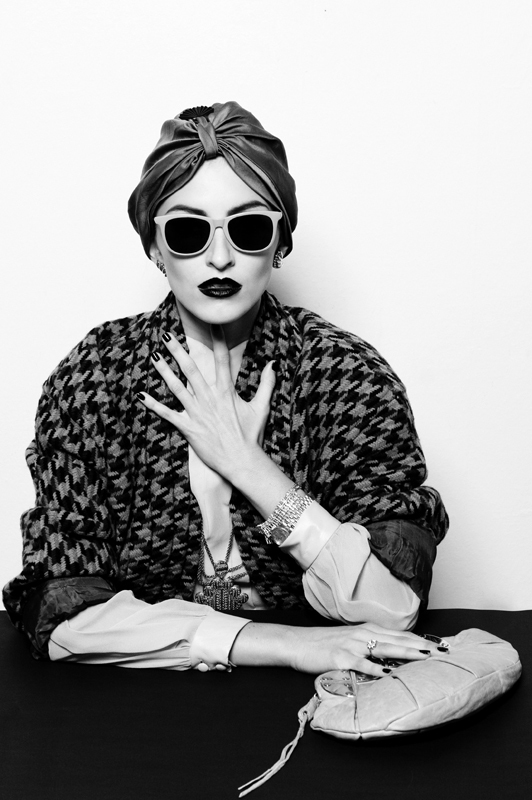


01. UNIT INTRO / FIRST PRINTED EDITORIAL
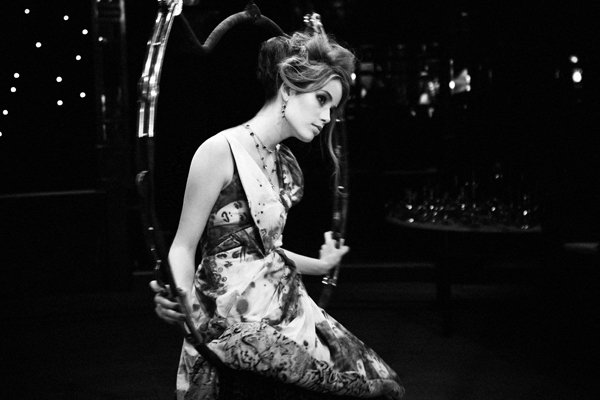

"Vsya Evropa" was a fashion publication in Berlin targeting Russian-speaking readers with high income.
I managed to arrange a meeting with the magazine's editorial team. I presented my portfolio, consisting of my best works at that time, which caught the interest of the editor-in-chief. She offered me the opportunity to shoot backstage during their next editorial session. Although I had initially expected to do my own photo shoot for them, I agreed to the offer, aiming to strengthen connections and learn more about the process.
On the day of the shoot, I got to meet the entire team and the photographer who had flown in specifically from Israel. We were working with a well-known model from one of the leading modeling agencies in Berlin.
I was deeply intrigued by how the photographer organized the creative process, directed poses, handled lighting, and managed the team. I also wanted to learn about camera settings, equipment used, and how ideas were communicated and discussed with the magazine's editorial team.
Although my main task was to capture backstage moments, I also took several photos of the model in different poses and outfits. As a result, in some of my photographs, the model is not looking directly at my camera but rather at the main photographer.
A few days after the shoot, I sent all the photos from the session, including some of my favorite shots of the model, to the editor-in-chief. To my surprise, they decided to include some of my photographs in the print edition as they were not particularly impressed with the other photographer's images. I couldn't imagine how the other photographer must have felt, but it was not my problem or fault.
A month later, I bought my first printed editorial from a bookstore and sent a copy to my parents. Another task accomplished!
I managed to arrange a meeting with the magazine's editorial team. I presented my portfolio, consisting of my best works at that time, which caught the interest of the editor-in-chief. She offered me the opportunity to shoot backstage during their next editorial session. Although I had initially expected to do my own photo shoot for them, I agreed to the offer, aiming to strengthen connections and learn more about the process.
On the day of the shoot, I got to meet the entire team and the photographer who had flown in specifically from Israel. We were working with a well-known model from one of the leading modeling agencies in Berlin.
I was deeply intrigued by how the photographer organized the creative process, directed poses, handled lighting, and managed the team. I also wanted to learn about camera settings, equipment used, and how ideas were communicated and discussed with the magazine's editorial team.
Although my main task was to capture backstage moments, I also took several photos of the model in different poses and outfits. As a result, in some of my photographs, the model is not looking directly at my camera but rather at the main photographer.
A few days after the shoot, I sent all the photos from the session, including some of my favorite shots of the model, to the editor-in-chief. To my surprise, they decided to include some of my photographs in the print edition as they were not particularly impressed with the other photographer's images. I couldn't imagine how the other photographer must have felt, but it was not my problem or fault.
A month later, I bought my first printed editorial from a bookstore and sent a copy to my parents. Another task accomplished!
01. UNIT INTRO / INTERVIEW
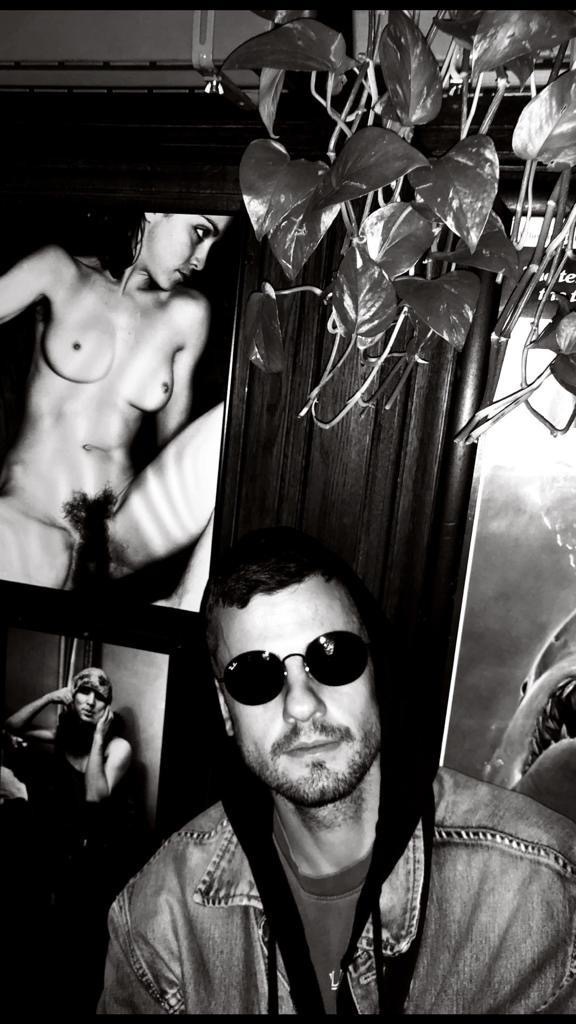
Sometimes I manage to earn some money, but rarely do I manage to spend it properly. I still need to learn that well.
I love and respect my mistakes. Maybe that's why I make them so often. Time changes their essence, and they turn into elegant and well-thought-out decisions by me.
Oh, I'm great at and love laughing at myself.
I move from apartment to apartment on average every two months, sometimes every week. I have impenetrable armor; I can withstand any blow.
My last interview was edited so that I came across as a sweet, correct, and talented boy in every aspect, living only for photography. That's complete nonsense! People often hear only what they want to hear, not what I say.
I'd like to have a musical ear like my father, but all I got was a sense of humor.
Sometimes, I can go days and nights without talking to anyone. During this time, I'm either passionately working or decomposing myself with poisonous pessimism and destroying the bricks of sanity.
It's easier for me to ask for forgiveness after doing something than to ask for permission beforehand. Or vice versa.
I no longer try to understand women. I admire them in all their multifaceted manifestations.
Silence benefits me. There's nothing more healing for me than spending a couple of hours in complete silence.
I can start a new life every day tomorrow.
I remember the name of the girl I first kissed. Her name was Ulyana. She had long hair and was the darling of the whole garden. Alright. I never actually kissed her. But I genuinely, genuinely wanted to. I swear.
I have experienced many losses in my life. But life has compensated me with no less significant gains.
I find it cloying to communicate with endlessly correct people who try to seem sinless. People with flaws attract me more strongly. And I have plenty of flaws.
A few days after the shoot, when the photos are ready, I instantly forget about them.
I try to delete all comments on my work on the internet as quickly as possible. Otherwise, everything turns into a trash heap.
I have no daily routine. No matter how much I try to make schedules and discipline myself. And honestly, deep down, I really like it.
My favorite book? It's "Robinson Crusoe." It's definitely my favorite and most instructive book.
Sometimes I know what I'm talking about. But that's even rarer than just sometimes.
I'm often asked if photographers sleep with models. Of course, they do. Do doctors sleep with nurses, do doctors sleep with orderlies, do teachers sleep with other teachers? Everyone sleeps with each other. Even animal trainers in the circus sleep with their pets...
I've noticed that sometimes when I try to be as correct, polite, and sweet as possible (considering that in reality, I'm hardly like that), people start to take advantage of me and push me around. It's not pleasant.
I stopped looking for what and how people write about me or my work.
I know everything about myself. I prefer to read about others.
Often, I fall asleep with thoughts that this day was complete crap. However, when I wake up, I usually don't remember it anymore.
There was a time in my life when everything was terrible. I filled the bathtub with water, submerged my head, and counted how long I could hold my breath.
My Skype is always in invisible mode.
I can listen to what others say. But I don't always understand what they're talking about.
The king of nature is definitely the skunk.
In 8 out of 10 cases, I don't finish what I've started.
I cannot stand betrayal and crude forms of illiterate impudence...
The stupidest question you can ask a child is "Who do you love more: mom or dad?"
Once, a girl I was dating confessed her love to me in a dream. It was my most intense love shock. By the way, in the same dream, I replied that I loved her too. But we broke up anyway.
I am limited by my laziness, stupidity, and insecurity.
If I were asked if I would write a book or make a movie, my answer would be: I would write a couple of short stories and make a couple of short films. I'm not capable of more than that yet.
I probably don't leave a good impression after a first meeting.
There are no boring subjects in school, only boring and tedious teachers.
I have a hard time digesting criticism aimed at me, but compliments also furrow my brow.
By the way, my ears often turn red.
People expect too much from me. I expect even more from myself. But I'm unlikely to fully live up to the hopes placed on me.
For me, it's better to say "no" more often and insistently than "yes."
I often scold myself for my endless laziness. But it's my forge of ideas and fantasies.
When I want to impress someone very much, or make them leave me alone, I start to be extremely and cynically sarcastic.
I get annoyed when people ask me the same questions over and over. It was flattering at first, but now it's infuriating. "How did you get into photography?" Oh, a thousand devils! It's because nothing else worked out well for me, and it still doesn't.
Sometimes your talent makes you do things you don't want to do, and you end up in places you wouldn't even dream of in a nightmare.
I always drank the whole glass of juice rather quickly, instead of sipping it through a straw for hours, clinking ice cubes against the glass walls.
I'm the worst joke-teller.
I'm not the kind of person people often ask for advice.
Me, me, me, me, me, and once again me, almost all of my sentences start with "I."
I don't like it when there's someone on the shooting set besides me and the person I'm shooting.
Boredom is not for me. I just get depressed quite often.
I was born in Belarus and lived there until I was 17. It's my fortress of memories, a warm, sticky lake where I can dive when it's completely cloudy and cold in reality.
I have no idea what I'll be doing or where I'll be living in 5 years. No idea at all.
In the last year, I've lived in four capitals (and enjoyed all of them), changed 8 or 9 apartments. Two suitcases of belongings and a suitcase of lights - that's all I've accumulated by 26. The trend isn't promising. But I don't care.
I shoot black and white photos because I like how my photos look in black and white. In color, they almost always look much worse. There are no other significant reasons.
I live in Paris, I've trampled almost all its streets, but my eyes just can't get enough.
I love and respect my mistakes. Maybe that's why I make them so often. Time changes their essence, and they turn into elegant and well-thought-out decisions by me.
Oh, I'm great at and love laughing at myself.
I move from apartment to apartment on average every two months, sometimes every week. I have impenetrable armor; I can withstand any blow.
My last interview was edited so that I came across as a sweet, correct, and talented boy in every aspect, living only for photography. That's complete nonsense! People often hear only what they want to hear, not what I say.
I'd like to have a musical ear like my father, but all I got was a sense of humor.
Sometimes, I can go days and nights without talking to anyone. During this time, I'm either passionately working or decomposing myself with poisonous pessimism and destroying the bricks of sanity.
It's easier for me to ask for forgiveness after doing something than to ask for permission beforehand. Or vice versa.
I no longer try to understand women. I admire them in all their multifaceted manifestations.
Silence benefits me. There's nothing more healing for me than spending a couple of hours in complete silence.
I can start a new life every day tomorrow.
I remember the name of the girl I first kissed. Her name was Ulyana. She had long hair and was the darling of the whole garden. Alright. I never actually kissed her. But I genuinely, genuinely wanted to. I swear.
I have experienced many losses in my life. But life has compensated me with no less significant gains.
I find it cloying to communicate with endlessly correct people who try to seem sinless. People with flaws attract me more strongly. And I have plenty of flaws.
A few days after the shoot, when the photos are ready, I instantly forget about them.
I try to delete all comments on my work on the internet as quickly as possible. Otherwise, everything turns into a trash heap.
I have no daily routine. No matter how much I try to make schedules and discipline myself. And honestly, deep down, I really like it.
My favorite book? It's "Robinson Crusoe." It's definitely my favorite and most instructive book.
Sometimes I know what I'm talking about. But that's even rarer than just sometimes.
I'm often asked if photographers sleep with models. Of course, they do. Do doctors sleep with nurses, do doctors sleep with orderlies, do teachers sleep with other teachers? Everyone sleeps with each other. Even animal trainers in the circus sleep with their pets...
I've noticed that sometimes when I try to be as correct, polite, and sweet as possible (considering that in reality, I'm hardly like that), people start to take advantage of me and push me around. It's not pleasant.
I stopped looking for what and how people write about me or my work.
I know everything about myself. I prefer to read about others.
Often, I fall asleep with thoughts that this day was complete crap. However, when I wake up, I usually don't remember it anymore.
There was a time in my life when everything was terrible. I filled the bathtub with water, submerged my head, and counted how long I could hold my breath.
My Skype is always in invisible mode.
I can listen to what others say. But I don't always understand what they're talking about.
The king of nature is definitely the skunk.
In 8 out of 10 cases, I don't finish what I've started.
I cannot stand betrayal and crude forms of illiterate impudence...
The stupidest question you can ask a child is "Who do you love more: mom or dad?"
Once, a girl I was dating confessed her love to me in a dream. It was my most intense love shock. By the way, in the same dream, I replied that I loved her too. But we broke up anyway.
I am limited by my laziness, stupidity, and insecurity.
If I were asked if I would write a book or make a movie, my answer would be: I would write a couple of short stories and make a couple of short films. I'm not capable of more than that yet.
I probably don't leave a good impression after a first meeting.
There are no boring subjects in school, only boring and tedious teachers.
I have a hard time digesting criticism aimed at me, but compliments also furrow my brow.
By the way, my ears often turn red.
People expect too much from me. I expect even more from myself. But I'm unlikely to fully live up to the hopes placed on me.
For me, it's better to say "no" more often and insistently than "yes."
I often scold myself for my endless laziness. But it's my forge of ideas and fantasies.
When I want to impress someone very much, or make them leave me alone, I start to be extremely and cynically sarcastic.
I get annoyed when people ask me the same questions over and over. It was flattering at first, but now it's infuriating. "How did you get into photography?" Oh, a thousand devils! It's because nothing else worked out well for me, and it still doesn't.
Sometimes your talent makes you do things you don't want to do, and you end up in places you wouldn't even dream of in a nightmare.
I always drank the whole glass of juice rather quickly, instead of sipping it through a straw for hours, clinking ice cubes against the glass walls.
I'm the worst joke-teller.
I'm not the kind of person people often ask for advice.
Me, me, me, me, me, and once again me, almost all of my sentences start with "I."
I don't like it when there's someone on the shooting set besides me and the person I'm shooting.
Boredom is not for me. I just get depressed quite often.
I was born in Belarus and lived there until I was 17. It's my fortress of memories, a warm, sticky lake where I can dive when it's completely cloudy and cold in reality.
I have no idea what I'll be doing or where I'll be living in 5 years. No idea at all.
In the last year, I've lived in four capitals (and enjoyed all of them), changed 8 or 9 apartments. Two suitcases of belongings and a suitcase of lights - that's all I've accumulated by 26. The trend isn't promising. But I don't care.
I shoot black and white photos because I like how my photos look in black and white. In color, they almost always look much worse. There are no other significant reasons.
I live in Paris, I've trampled almost all its streets, but my eyes just can't get enough.
01. UNIT INTRO / INTERVIEW


Today, I can attribute my photography's dark period to my inadequate technical skills in handling digital cameras and equipment. It was easier to create eerie and sometimes scary images, to break rules and challenge conventions.
Many photographers undergo this phase in their career, just as beginners painting or playing an instrument create hectic brush strokes or press all keys on an instrument they do not know how to play. These creations have a special value to them.
I did not study instructions, but instead played with the settings on my camera and lighting equipment to achieve some unusual and captivating effects. I worked with amateur models who often posed awkwardly, and I too did not know much about posing and directing models. I lacked an understanding of how to materialize my ideas through model direction.
The Berlin of that time also had an energy that was rather gloomy, and it seeped into my photography.
In the future, the cities I lived in would significantly influence my photography. Additionally, the work of photographer Chadwick Tyler, while not necessarily my favourite, certainly elicited a reaction from me with its raw, dark, and even terrifying images.
I was checking out some interviews with photographer Chadwick Tyler and he was describing his style. He said that he tends to focus on capturing the energy and presence of his subjects, rather than trying to create some kind of perfect or idealized image. Tyler also mentioned that he's really drawn to the idea of creating images that have a bit of a "timeless" quality to them, so that they don't feel too stuck in one particular moment or era. Overall, it seems like his approach is very much about tapping into his own intuition and creativity, rather than getting too bogged down in trying to follow any particular rules or techniques.
Many photographers undergo this phase in their career, just as beginners painting or playing an instrument create hectic brush strokes or press all keys on an instrument they do not know how to play. These creations have a special value to them.
I did not study instructions, but instead played with the settings on my camera and lighting equipment to achieve some unusual and captivating effects. I worked with amateur models who often posed awkwardly, and I too did not know much about posing and directing models. I lacked an understanding of how to materialize my ideas through model direction.
The Berlin of that time also had an energy that was rather gloomy, and it seeped into my photography.
In the future, the cities I lived in would significantly influence my photography. Additionally, the work of photographer Chadwick Tyler, while not necessarily my favourite, certainly elicited a reaction from me with its raw, dark, and even terrifying images.
I was checking out some interviews with photographer Chadwick Tyler and he was describing his style. He said that he tends to focus on capturing the energy and presence of his subjects, rather than trying to create some kind of perfect or idealized image. Tyler also mentioned that he's really drawn to the idea of creating images that have a bit of a "timeless" quality to them, so that they don't feel too stuck in one particular moment or era. Overall, it seems like his approach is very much about tapping into his own intuition and creativity, rather than getting too bogged down in trying to follow any particular rules or techniques.
01. UNIT INTRO / ELITE PARIS
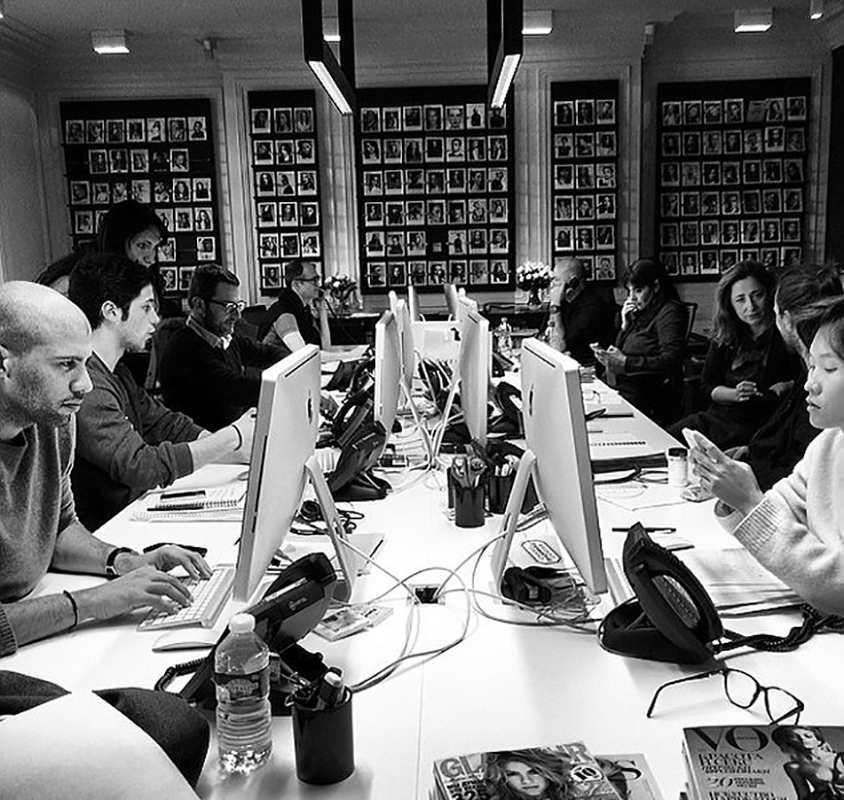
I did some model tests in Moscow and got paid for them. Therefore, my initial plan was to make appointments at model agencies in Paris so that I could shoot paid tests for them.
I made a list of all the modeling agencies in Paris and sent them emails. The owner of Avant gave me direct contacts for some bookers at the agencies.
To my surprise, most of the agencies were interested in meeting with me.
My first appointment was at Elite Paris, one of the best and well-known agencies in the world. I was quite nervous before entering their huge office at Avenue Montaigne.
I didn't have a proper portfolio for my first meetings. Instead, I printed about a hundred photographs from my shoots in Moscow and Berlin, each in a postcard size (10x15cm).
They looked through all the images and asked some of their colleagues to join us. They were not sure what to do with me. Some of them told me I should continue with my artistic work and not do any testing. However, I needed money if I wanted to stay in Paris, and I didn't know how to earn money otherwise.
Most of the modeling agencies in Paris were paying 150 euros for tests, with the first test being free. If they were satisfied with the results, then they were ready to pay.
I made a list of all the modeling agencies in Paris and sent them emails. The owner of Avant gave me direct contacts for some bookers at the agencies.
To my surprise, most of the agencies were interested in meeting with me.
My first appointment was at Elite Paris, one of the best and well-known agencies in the world. I was quite nervous before entering their huge office at Avenue Montaigne.
I didn't have a proper portfolio for my first meetings. Instead, I printed about a hundred photographs from my shoots in Moscow and Berlin, each in a postcard size (10x15cm).
They looked through all the images and asked some of their colleagues to join us. They were not sure what to do with me. Some of them told me I should continue with my artistic work and not do any testing. However, I needed money if I wanted to stay in Paris, and I didn't know how to earn money otherwise.
Most of the modeling agencies in Paris were paying 150 euros for tests, with the first test being free. If they were satisfied with the results, then they were ready to pay.
01. UNIT INTRO / EXPERIMENTS


During my first years in Paris, I spent a lot of time in Minsk and Moscow, working on both artistic and personal projects. For my shoots, I moved away from traditional model tests and opted for crazy styling and non-traditional makeup, which added an exciting element to my work.
In Moscow, I had the advantage of being from Paris, which allowed me to work with some amazing teams. Prior to my arrival in Moscow, I would email stylists to organize shoots and ensure everything was in place.
After production and editing were also important aspects of my work, where I would experiment with new tools in photoshop to make my photographs look even more stunning.
In Moscow, I had the advantage of being from Paris, which allowed me to work with some amazing teams. Prior to my arrival in Moscow, I would email stylists to organize shoots and ensure everything was in place.
After production and editing were also important aspects of my work, where I would experiment with new tools in photoshop to make my photographs look even more stunning.
01. UNIT INTRO / FIRST TESTS IN PARIS


Model tests had a significant impact on the evolution of my photography.
As the money from model tests was my primary source of income, I had to shoot frequently and deliver high-quality results in order to earn a living. Initially, I was paid 150 euros for each test, which was barely enough to sustain an expensive life in Paris.
However, as time went on, I became more familiar with the requirements and expectations of the agencies, and I adapted my approach accordingly.
Typically, the agencies would select three to five photos from each test for use in their portfolios, with a focus on portraits and full-body shots that showcased the model's physique.
At that time in Paris, I was one of the few Russian-speaking photographers, and unlike many of my compatriots who followed in my footsteps, I was able to work with model agencies on an official basis and issue invoices for my services. As a German resident, I had all the necessary tax documents in order.
As the money from model tests was my primary source of income, I had to shoot frequently and deliver high-quality results in order to earn a living. Initially, I was paid 150 euros for each test, which was barely enough to sustain an expensive life in Paris.
However, as time went on, I became more familiar with the requirements and expectations of the agencies, and I adapted my approach accordingly.
Typically, the agencies would select three to five photos from each test for use in their portfolios, with a focus on portraits and full-body shots that showcased the model's physique.
At that time in Paris, I was one of the few Russian-speaking photographers, and unlike many of my compatriots who followed in my footsteps, I was able to work with model agencies on an official basis and issue invoices for my services. As a German resident, I had all the necessary tax documents in order.
01. UNIT INTRO / COVER STORY FOR MARIE CLAIRE

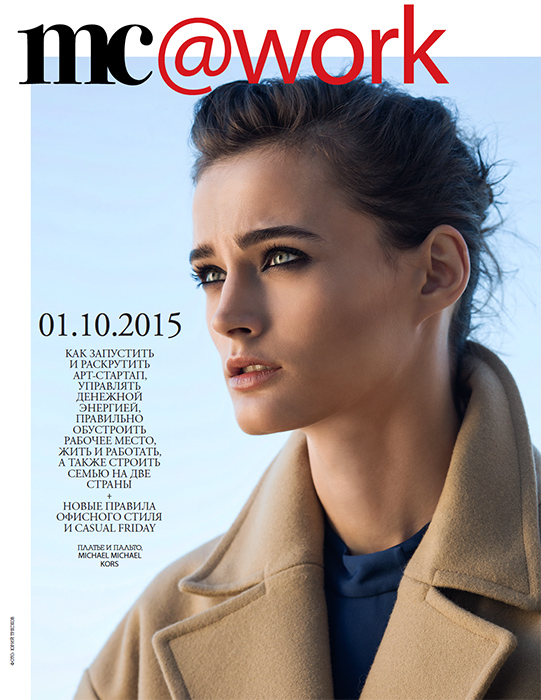
For me personally, this cover for Marie Claire Magazine is one of my most impressive commercial covers. The strong portrait of the model and the design of the cover look very striking and vibrant.
However, despite all its qualities, this cover was not selected for publication in this particular issue...
A few weeks after the photoshoot, the magazine contacted me to inform that they needed to replace the image on the cover. The reason was related to a change in the model's outfit. They had to replace the Chanel dress with Dior. And in this situation, nothing could be done. It shows how important advertisers are and how magazines make money.
Of course, I was a bit disappointed. I wanted this cover to be published because it was stunning. The model, her agency, and the entire team working on the shoot were also very disappointed. But sometimes these things happen, and we must keep moving forward.
However, despite all its qualities, this cover was not selected for publication in this particular issue...
A few weeks after the photoshoot, the magazine contacted me to inform that they needed to replace the image on the cover. The reason was related to a change in the model's outfit. They had to replace the Chanel dress with Dior. And in this situation, nothing could be done. It shows how important advertisers are and how magazines make money.
Of course, I was a bit disappointed. I wanted this cover to be published because it was stunning. The model, her agency, and the entire team working on the shoot were also very disappointed. But sometimes these things happen, and we must keep moving forward.
01. UNIT INTRO / PHOTO AGENCY - ART BOARD
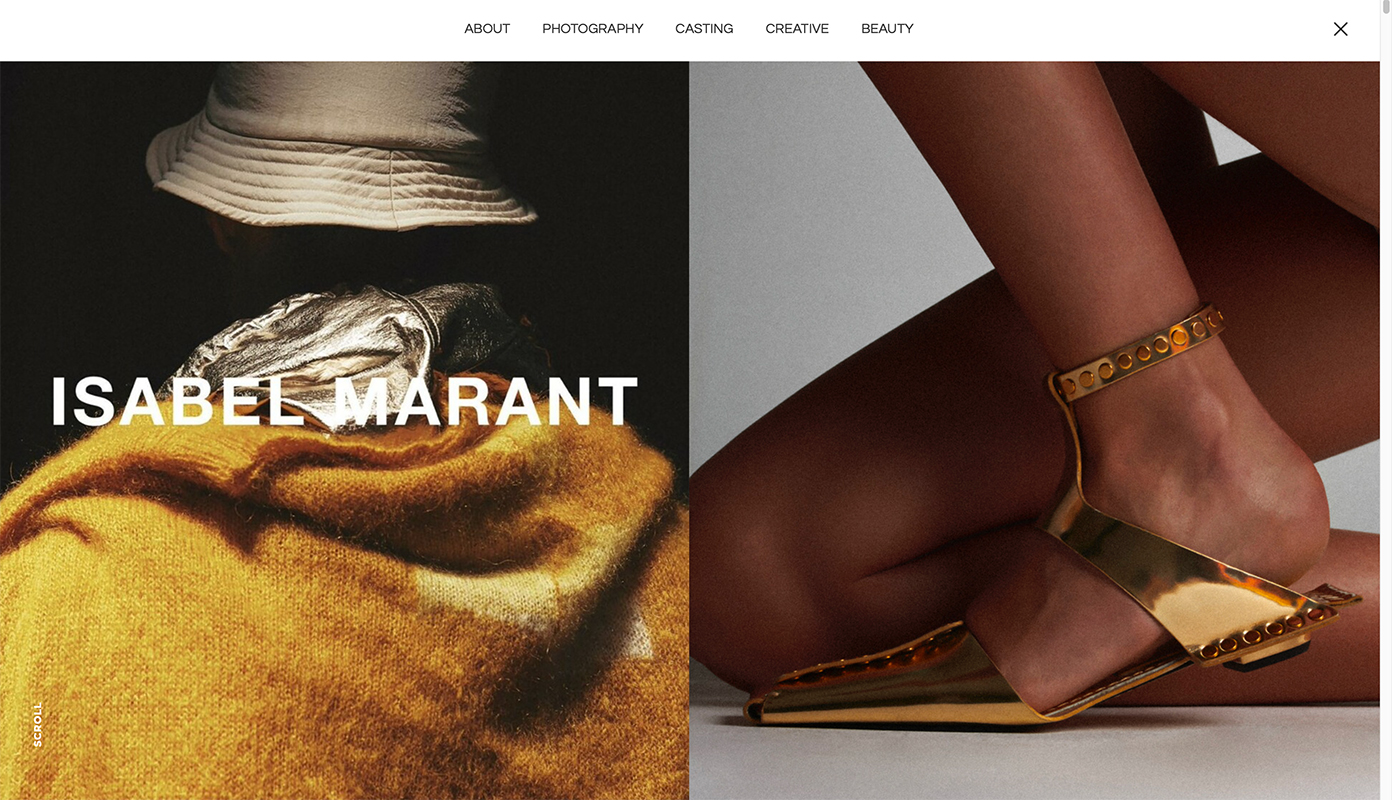
Part 1.
Shortly before my move to New York, Vincent decided to launch a photo agency that would represent artists such as photographers, stylists, makeup artists, and hair stylists. He invited me to join the agency, and I was thrilled to be part of this exciting project. Finally, I had an agency in Paris that could help me advance in photography and take my career to the next level.
Vincent's partner, Nico, who is a casting director, was instrumental in organizing my photos and creating my professional portfolio to showcase to potential clients. Nico also helped me arrange several meetings with agencies representing stylists. It was important to showcase my work, receive feedback, and make new contacts for future collaborations to attract new clients and projects.
Our main goal was to secure more editorial shoots in magazines and further promote and develop my photography style. The next step was to obtain commercial assignments, campaigns, and look books. Meetings with stylists and collaborating with them were crucial, as they demonstrated to commercial clients that I could photograph fashion and clothing.
The agency arranged meetings with various agencies in Paris, and I attended them, similar to how models go to castings, bringing along my portfolio to showcase my work. This approach was new to me, and it took some time to adapt since I wasn't familiar with this type of promotional method.
Shortly before my move to New York, Vincent decided to launch a photo agency that would represent artists such as photographers, stylists, makeup artists, and hair stylists. He invited me to join the agency, and I was thrilled to be part of this exciting project. Finally, I had an agency in Paris that could help me advance in photography and take my career to the next level.
Vincent's partner, Nico, who is a casting director, was instrumental in organizing my photos and creating my professional portfolio to showcase to potential clients. Nico also helped me arrange several meetings with agencies representing stylists. It was important to showcase my work, receive feedback, and make new contacts for future collaborations to attract new clients and projects.
Our main goal was to secure more editorial shoots in magazines and further promote and develop my photography style. The next step was to obtain commercial assignments, campaigns, and look books. Meetings with stylists and collaborating with them were crucial, as they demonstrated to commercial clients that I could photograph fashion and clothing.
The agency arranged meetings with various agencies in Paris, and I attended them, similar to how models go to castings, bringing along my portfolio to showcase my work. This approach was new to me, and it took some time to adapt since I wasn't familiar with this type of promotional method.
01. UNIT INTRO / MOVING TO USA
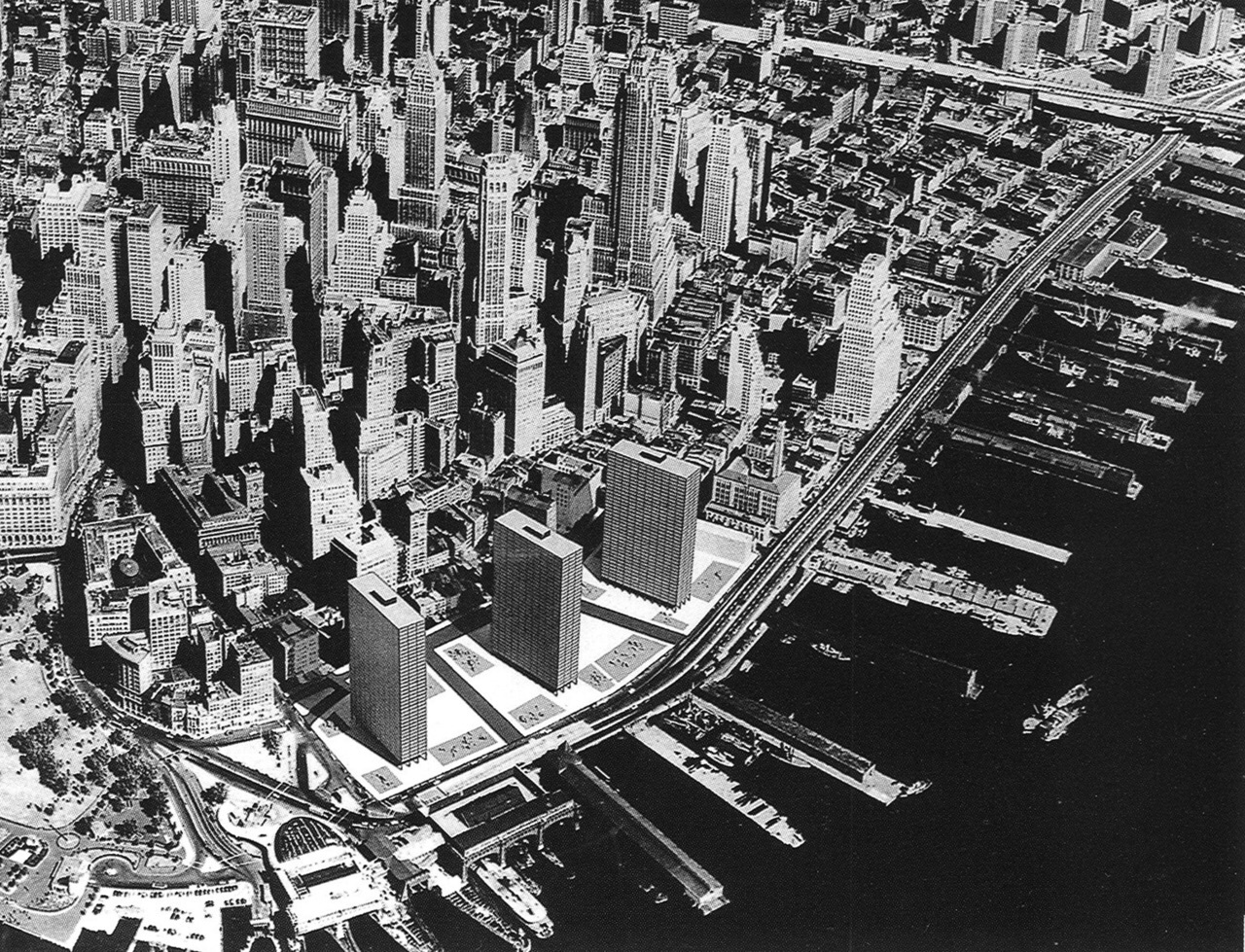
NYC
Two weeks before my birthday on May 12th, I arrived in JFK. In 2010, I moved from Germany to Paris, and it was also on May 12th, which was a mysterios coincidence.
After a long flight, I took a cab and went straight to East Harlem, where I was staying for the next three weeks. I quickly took a shower, left my bags at home, and went for a walk. I couldn't wait to explore and start discovering the city, but my perception was impacted by the jet lag that I was experiencing for the first time in my life.
In a way, I already knew this city pretty well from all the movies, TV shows, advertisements, books, and music videos that I had seen. Images of American culture, the American dream, and the American way of life were already pre-programmed and pre-installed in my mind.
NYC, like Berlin, Paris, and Moscow, made a huge impression on me. But this time, it was different. It took me a while to realize what it was. It's all about NYC's energy that makes it so special and unique. It's raw and wild energy that is storming and raging from everywhere around you. In some way, you might feel that electricity passes through your body and your mind. Buildings, cars, and people are in a constant vibration and in hysterical dancing.
With time, you get addicted to this constant rush of adrenaline. You would walk the streets and see great buildings, fantastic architecture, and next to them, terrible houses, streets full of trash, homeless people lying in the streets. There's craziness everywhere. You don't walk; you start to run, keeping up with the tempo.
I walked for hours non-stop, observing and absorbing this energy. At some point, it was too much, and you would feel your brain about to explode.
And I needed this explosion to happen in my life. After five years in Paris, I got stuck and framed into my own style. I became predictable for clients and for myself as well.
I was desperately looking to restart and reinvent myself and my photography. I needed new challenges, and NYC is the right place to be to challenge yourself to the extreme.
At first, I didn't have a plan to move and live in NYC. My initial plan was to stay for six weeks and see how things would go. Without any pressure and no expectations. But something was telling me that I was staying.
After a long flight, I took a cab and went straight to East Harlem, where I was staying for the next three weeks. I quickly took a shower, left my bags at home, and went for a walk. I couldn't wait to explore and start discovering the city, but my perception was impacted by the jet lag that I was experiencing for the first time in my life.
In a way, I already knew this city pretty well from all the movies, TV shows, advertisements, books, and music videos that I had seen. Images of American culture, the American dream, and the American way of life were already pre-programmed and pre-installed in my mind.
NYC, like Berlin, Paris, and Moscow, made a huge impression on me. But this time, it was different. It took me a while to realize what it was. It's all about NYC's energy that makes it so special and unique. It's raw and wild energy that is storming and raging from everywhere around you. In some way, you might feel that electricity passes through your body and your mind. Buildings, cars, and people are in a constant vibration and in hysterical dancing.
With time, you get addicted to this constant rush of adrenaline. You would walk the streets and see great buildings, fantastic architecture, and next to them, terrible houses, streets full of trash, homeless people lying in the streets. There's craziness everywhere. You don't walk; you start to run, keeping up with the tempo.
I walked for hours non-stop, observing and absorbing this energy. At some point, it was too much, and you would feel your brain about to explode.
And I needed this explosion to happen in my life. After five years in Paris, I got stuck and framed into my own style. I became predictable for clients and for myself as well.
I was desperately looking to restart and reinvent myself and my photography. I needed new challenges, and NYC is the right place to be to challenge yourself to the extreme.
At first, I didn't have a plan to move and live in NYC. My initial plan was to stay for six weeks and see how things would go. Without any pressure and no expectations. But something was telling me that I was staying.
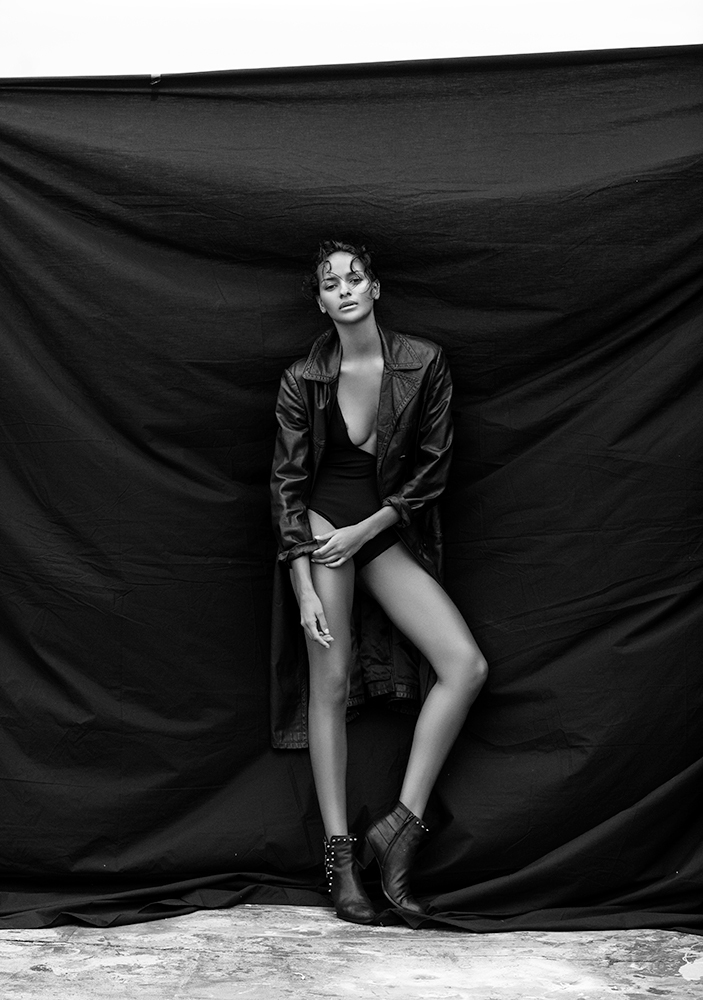

THAT WAS 5 % FROM 01. UNIT
02. UNIT PRE-PRODUCTION
Preparation is a key element in achieving success in photography. Whether it's planning a shoot, developing a concept, or organizing your gear, taking the time to prepare can make all the difference in the outcome of your work. Good preparation enables you to focus on your creative vision and execute your ideas with confidence. It also helps to minimize unexpected problems or setbacks that can derail a shoot.
By investing in preparation, you set yourself up for success and position yourself to take your photography to the next level.
6.
INSPIRATION
PHOTOGRAPHY
7.
MOOD-BOARDS
8.
PORTFOLIOS
9.
FASHION PHOTOGRAPHY
COMMERCIAL VS. PERSONAL WORK
RATES
By investing in preparation, you set yourself up for success and position yourself to take your photography to the next level.
6.
INSPIRATION
PHOTOGRAPHY
- inspiration techniques and sources
- photographers to watch
- books, articles and interviews on photography
7.
MOOD-BOARDS
- strategies for creating mood boards
- organising images used as references
- lay-outs for mood-boards
- finding inspiration
- treatment & brief & call-sheet
8.
PORTFOLIOS
- choose your best work
- google yourself
- what to include in your portfolio
- create multiple portfolios for different clients
9.
FASHION PHOTOGRAPHY
COMMERCIAL VS. PERSONAL WORK
RATES
- specifics of fashion photography
- list of articles, documentaries & magazines on fashion
- creating concepts
- negotiations
- prices & costs
02. UNIT / PRE-PRODUCATION
Inspiration techniques and sources, including notable photographers to watch and recommended books, articles, and interviews on photography.
Mood-boards, including strategies for creating them, organizing image references, and developing treatments, briefs, and call sheets.
Portfolio creation, how to choose your best work, what to include, and how to adapt portfolios for different clients.
Specifics of fashion photography, including the differences between commercial and personal work, rates, and negotiations. Resources such as articles, documentaries, and magazines on fashion, as well as offer guidance on creating concepts and managing prices and costs.
02. UNIT PRE-PRODUCTION / WHAT INSPIRES ME?
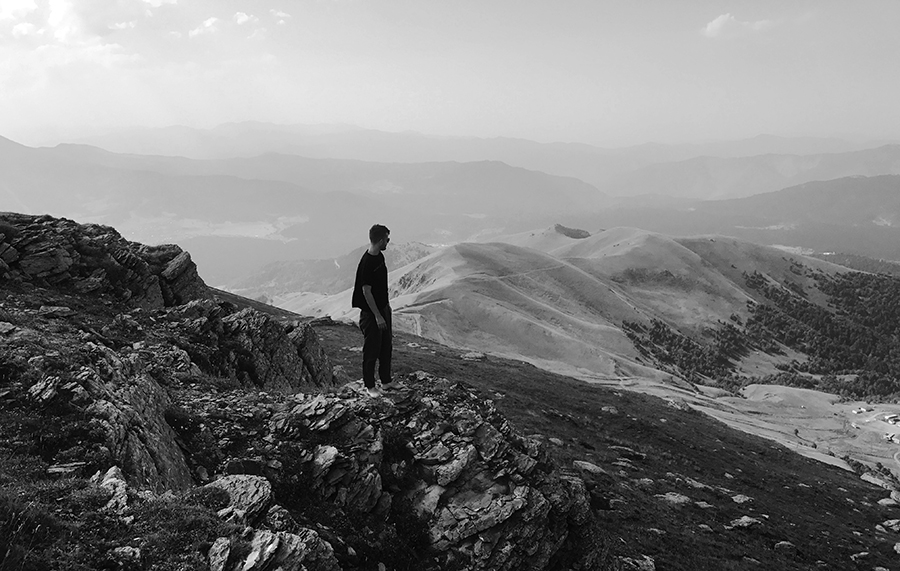
" To take photos, you have to love life – then you can photograph anything."
Exposing yourself to life and absorbing as much as possible is crucial. Read books, poems, magazines, and newspapers, watch movies and documentaries, and visit galleries, exhibitions, and theaters. Stay curious!
If you want to be a photographer, you must live for it. Research every day, keep a visual diary, and journal your impressions and ideas.
Photographing people requires meeting people. Learn to listen, notice the beauty around you, observe, and fall in love. Make new connections and bonds, and get inspired by people's stories.
Since 2001, I've been traveling all over the world, changing cities and countries every few months. It has not only affected my life but also my photography.
Berlin brought raw, wild, and dark energy into my life and photography. The city's vibrant and edgy vibe allowed me to capture the raw and unfiltered essence of life.
Paris enriched me with its artistic aesthetics, and it was where I first manifested the femme fatale style. The city's rich artistic history and enchanting beauty inspired me to create a unique style that embodied the seductive and alluring nature of the femme fatale.
Moscow is absolutely cyberpunk, full of crazy contradictions and opposites. The city's futuristic and eclectic mix of cultures and traditions provided a rich and diverse landscape for me to explore and capture through my photography.
NYC created an insane remix of everything I had seen and learned before. The fast-paced environment pushed me to be more creative and daring in my approach to photography. It was an inspiring and energizing place to be as an artist.
L.A. is a city where I can find a perfect balance between nature, work, and still life. The city's stunning natural landscapes and laid-back atmosphere allowed me to find a sense of balance and tranquility while pursuing my passion for photography.
London is a mix of NYC & Berlin. The city's edgy and dynamic vibe, coupled with its rich history and diverse cultural landscape, provided a unique canvas for me to capture the ever-evolving essence of this iconic metropolis.
Comfort zones are vital to recover, decompress, and recharge for a short period of time. But then I have to move forward, challenge myself, and push into the unknown to discover new things!
Exposing yourself to life and absorbing as much as possible is crucial. Read books, poems, magazines, and newspapers, watch movies and documentaries, and visit galleries, exhibitions, and theaters. Stay curious!
If you want to be a photographer, you must live for it. Research every day, keep a visual diary, and journal your impressions and ideas.
Photographing people requires meeting people. Learn to listen, notice the beauty around you, observe, and fall in love. Make new connections and bonds, and get inspired by people's stories.
Since 2001, I've been traveling all over the world, changing cities and countries every few months. It has not only affected my life but also my photography.
Berlin brought raw, wild, and dark energy into my life and photography. The city's vibrant and edgy vibe allowed me to capture the raw and unfiltered essence of life.
Paris enriched me with its artistic aesthetics, and it was where I first manifested the femme fatale style. The city's rich artistic history and enchanting beauty inspired me to create a unique style that embodied the seductive and alluring nature of the femme fatale.
Moscow is absolutely cyberpunk, full of crazy contradictions and opposites. The city's futuristic and eclectic mix of cultures and traditions provided a rich and diverse landscape for me to explore and capture through my photography.
NYC created an insane remix of everything I had seen and learned before. The fast-paced environment pushed me to be more creative and daring in my approach to photography. It was an inspiring and energizing place to be as an artist.
L.A. is a city where I can find a perfect balance between nature, work, and still life. The city's stunning natural landscapes and laid-back atmosphere allowed me to find a sense of balance and tranquility while pursuing my passion for photography.
London is a mix of NYC & Berlin. The city's edgy and dynamic vibe, coupled with its rich history and diverse cultural landscape, provided a unique canvas for me to capture the ever-evolving essence of this iconic metropolis.
Comfort zones are vital to recover, decompress, and recharge for a short period of time. But then I have to move forward, challenge myself, and push into the unknown to discover new things!
QUOTE
" I spend a lot of time preparing. I think a lot about what I want to do. I have prep books, little notebooks in which I write everything down before a sitting. Otherwise I would forget my ideas. "
― Helmut Newton
― Helmut Newton

"Abstract: The Art of Design" (Netflix): This series features a diverse group of designers, including graphic designers, illustrators, and architects, discussing their creative process and sources of inspiration.
"The Creative Brain" (Netflix): This documentary explores the neuroscience behind creativity and features interviews with artists, musicians, and scientists discussing the creative process.
"Helvetica" (Netflix): This documentary focuses on the ubiquitous font and the impact it has had on graphic design and typography.
"Jiro Dreams of Sushi" (Netflix): This documentary follows the story of Jiro Ono, an 85-year-old sushi master in Tokyo, and explores his passion for perfection and dedication to his craft.
"The Price of Everything" (HBO): This documentary examines the contemporary art world and the role of money and commerce in the creative process.
"Exit Through the Gift Shop" (Netflix): This documentary follows the story of an amateur filmmaker who becomes immersed in the world of street art and the underground art scene.
"The Art of Photography" (PBS): This documentary series explores the history and evolution of photography and features interviews with prominent photographers discussing their creative process and sources of inspiration.
"The Secret Life of Chaos" (BBC): This documentary explores the science of chaos theory and its influence on art and creativity.
"Everything is a Remix" (YouTube): This video series examines the ways in which artists and creators borrow and remix ideas from other sources to create new works.
"Herb & Dorothy" (Amazon Prime): This documentary follows the story of Herb and Dorothy Vogel, a couple who collected contemporary art on a modest budget, and the impact they had on the art world.
"The Creative Brain" (Netflix): This documentary explores the neuroscience behind creativity and features interviews with artists, musicians, and scientists discussing the creative process.
"Helvetica" (Netflix): This documentary focuses on the ubiquitous font and the impact it has had on graphic design and typography.
"Jiro Dreams of Sushi" (Netflix): This documentary follows the story of Jiro Ono, an 85-year-old sushi master in Tokyo, and explores his passion for perfection and dedication to his craft.
"The Price of Everything" (HBO): This documentary examines the contemporary art world and the role of money and commerce in the creative process.
"Exit Through the Gift Shop" (Netflix): This documentary follows the story of an amateur filmmaker who becomes immersed in the world of street art and the underground art scene.
"The Art of Photography" (PBS): This documentary series explores the history and evolution of photography and features interviews with prominent photographers discussing their creative process and sources of inspiration.
"The Secret Life of Chaos" (BBC): This documentary explores the science of chaos theory and its influence on art and creativity.
"Everything is a Remix" (YouTube): This video series examines the ways in which artists and creators borrow and remix ideas from other sources to create new works.
"Herb & Dorothy" (Amazon Prime): This documentary follows the story of Herb and Dorothy Vogel, a couple who collected contemporary art on a modest budget, and the impact they had on the art world.
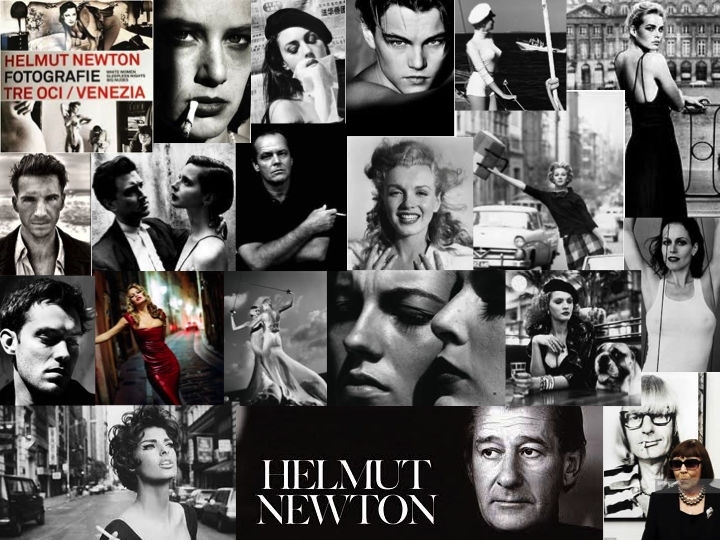
HELMUT NEWTON - (1920-2004) was a German-Australian photographer known for his provocative and highly-stylized fashion photography. His images often featured women in powerful and dominant roles, with themes of fetishism and eroticism. Newton's work was highly influential in the fashion industry and helped to redefine the traditional concept of beauty. He worked for a number of prominent publications including Vogue, Harper's Bazaar, and Playboy, and his photographs are now highly sought after by collectors. Newton's legacy continues to inspire photographers and fashion designers today.
Foundation Helmut Newton in Berlin
Documentaries:
"Helmut by June" (1996) - This documentary, directed by Newton's wife June, offers an intimate look at Newton's life and career, featuring interviews with him, his models, and his collaborators.
"Frames from the Edge" (1989) - This documentary, directed by Adrian Maben, features interviews with Newton, as well as other photographers, discussing the state of photography in the late 1980s.
"Helmut Newton: The Bad and the Beautiful" (2020) - This documentary, directed by Gero von Boehm, explores Newton's life and work through interviews with models, friends, and colleagues, as well as archival footage and photographs.
Interviews:
Claudia Schiffer shares her favorite memories of Helmut Newton
The article discusses a new documentary called "Helmut Newton: The Bad and the Beautiful", which explores the life and work of the late fashion photographer Helmut Newton. The documentary includes interviews with models, photographers, and other industry insiders, including Claudia Schiffer, who worked closely with Newton throughout her career.
In the article, Schiffer shares her memories of working with Newton and reflects on his impact on the fashion industry. She describes Newton as a "genius" who pushed boundaries and challenged conventions, and notes that his influence is still felt today in the world of fashion photography.
Helmut Newton Interview
In the interview, Newton discusses his early career as a photographer and his approach to creating his iconic images. He shares insights into his creative process, noting that he often drew inspiration from the people and places around him.
Newton also discusses his controversial images, which often featured nudity and sexuality. He notes that his work was often misunderstood and misrepresented, but he was unapologetic about his artistic vision.
Throughout the interview, Newton comes across as a confident and unapologetic artist who was not afraid to push boundaries and challenge conventions. He also reflects on his legacy as a photographer, noting that he hoped to be remembered as someone who made a lasting impact on the world of fashion and photography.
Helmut Newton by Helmut Newton
During the interviews, Helmut Newton appeared as a confident and assertive artist who was unafraid to test limits and question norms. He spoke openly about his use of nudity and sexuality in his photographs, explaining that it allowed him to explore power dynamics and relationships between genders. Newton also provided valuable insights into his creative process, highlighting that he frequently drew inspiration from his surroundings and the people he encountered. He also discussed his hopes for his legacy, expressing a desire to be remembered as a photographer who made a significant impact on the world of fashion and photography.
+
Frank Horvat with Helmut Newton (1986)
Helmut Newton: Early Years
Helmut Newton interview | Fashion photographer | Alexander Liberman | 197
Foundation Helmut Newton in Berlin
Documentaries:
"Helmut by June" (1996) - This documentary, directed by Newton's wife June, offers an intimate look at Newton's life and career, featuring interviews with him, his models, and his collaborators.
"Frames from the Edge" (1989) - This documentary, directed by Adrian Maben, features interviews with Newton, as well as other photographers, discussing the state of photography in the late 1980s.
"Helmut Newton: The Bad and the Beautiful" (2020) - This documentary, directed by Gero von Boehm, explores Newton's life and work through interviews with models, friends, and colleagues, as well as archival footage and photographs.
Interviews:
Claudia Schiffer shares her favorite memories of Helmut Newton
The article discusses a new documentary called "Helmut Newton: The Bad and the Beautiful", which explores the life and work of the late fashion photographer Helmut Newton. The documentary includes interviews with models, photographers, and other industry insiders, including Claudia Schiffer, who worked closely with Newton throughout her career.
In the article, Schiffer shares her memories of working with Newton and reflects on his impact on the fashion industry. She describes Newton as a "genius" who pushed boundaries and challenged conventions, and notes that his influence is still felt today in the world of fashion photography.
Helmut Newton Interview
In the interview, Newton discusses his early career as a photographer and his approach to creating his iconic images. He shares insights into his creative process, noting that he often drew inspiration from the people and places around him.
Newton also discusses his controversial images, which often featured nudity and sexuality. He notes that his work was often misunderstood and misrepresented, but he was unapologetic about his artistic vision.
Throughout the interview, Newton comes across as a confident and unapologetic artist who was not afraid to push boundaries and challenge conventions. He also reflects on his legacy as a photographer, noting that he hoped to be remembered as someone who made a lasting impact on the world of fashion and photography.
Helmut Newton by Helmut Newton
During the interviews, Helmut Newton appeared as a confident and assertive artist who was unafraid to test limits and question norms. He spoke openly about his use of nudity and sexuality in his photographs, explaining that it allowed him to explore power dynamics and relationships between genders. Newton also provided valuable insights into his creative process, highlighting that he frequently drew inspiration from his surroundings and the people he encountered. He also discussed his hopes for his legacy, expressing a desire to be remembered as a photographer who made a significant impact on the world of fashion and photography.
+
Frank Horvat with Helmut Newton (1986)
Helmut Newton: Early Years
Helmut Newton interview | Fashion photographer | Alexander Liberman | 197
02. UNIT PRE-PRODUCTION / MOOD BOARDS
The first steps in creating a mood board in photography start with gathering photos from various sources, including fashion magazines, social media, and online photography platforms. This process allows me to gather a diverse range of inspiration and ideas for my mood boards.
When selecting images for a future shoot, I begin choosing photos that align with the theme or concept of the project. I pay special attention to color schemes, composition, lighting, and poses. It is important to create a cohesive mood and character in the mood board, ensuring that it clearly conveys the intended aesthetic.
In addition to photos, I also consider the use of other visual elements such as typography, illustrations, and textures. These add depth and interest to the mood board and help convey the ideas and concept of the shoot more precisely. By varying the visual elements, I create a unique style and visual impression that aligns with the intended concept.
To make the mood board even more artistic and structured, I experiment with different layouts and design options. By using various compositional arrangements, I create a harmonious placement of photos and other elements on the mood board, making it more informative and visually appealing.
Ultimately, creating a mood board in photography allows me to visually organize ideas, inspiration, and concepts before a shoot. It serves as not only a source of inspiration for myself but also a means of communication with the team, models, or clients. The mood board helps establish a unified visual platform and understanding of the shoot's goals, leading to a more successful and productive project implementation.
When selecting images for a future shoot, I begin choosing photos that align with the theme or concept of the project. I pay special attention to color schemes, composition, lighting, and poses. It is important to create a cohesive mood and character in the mood board, ensuring that it clearly conveys the intended aesthetic.
In addition to photos, I also consider the use of other visual elements such as typography, illustrations, and textures. These add depth and interest to the mood board and help convey the ideas and concept of the shoot more precisely. By varying the visual elements, I create a unique style and visual impression that aligns with the intended concept.
To make the mood board even more artistic and structured, I experiment with different layouts and design options. By using various compositional arrangements, I create a harmonious placement of photos and other elements on the mood board, making it more informative and visually appealing.
Ultimately, creating a mood board in photography allows me to visually organize ideas, inspiration, and concepts before a shoot. It serves as not only a source of inspiration for myself but also a means of communication with the team, models, or clients. The mood board helps establish a unified visual platform and understanding of the shoot's goals, leading to a more successful and productive project implementation.
Studying music videos can be highly beneficial for photographers as a source of inspiration and the development of their own individual style.
By analyzing the visual elements in music videos, photographers can gain new ideas and perspectives. They can study the lighting, composition, and style employed in the videos and apply these techniques to their own shoots. For instance, studying the use of lighting to create mood or experimenting with unconventional compositions that give the photograph a unique visual effect.
Particular interest lies in music videos directed by photographers themselves. These videos combine creative visuality and directing skills, making them ideal examples to study. Works by directors such as David Fincher, Mark Romanek, and Floria Sigismondi showcase magnificent visual solutions that can inspire photographers for new shoots.
Studying music videos not only allows photographers to gain new ideas but also contributes to the development of their individual style. By understanding the techniques and methods employed in the videos, photographers can enrich their visual language and strengthen their own artistic niche. This enables them to create photographs that stand out and reflect their unique perspective on the world.
___
By analyzing the visual elements in music videos, photographers can gain new ideas and perspectives. They can study the lighting, composition, and style employed in the videos and apply these techniques to their own shoots. For instance, studying the use of lighting to create mood or experimenting with unconventional compositions that give the photograph a unique visual effect.
Particular interest lies in music videos directed by photographers themselves. These videos combine creative visuality and directing skills, making them ideal examples to study. Works by directors such as David Fincher, Mark Romanek, and Floria Sigismondi showcase magnificent visual solutions that can inspire photographers for new shoots.
Studying music videos not only allows photographers to gain new ideas but also contributes to the development of their individual style. By understanding the techniques and methods employed in the videos, photographers can enrich their visual language and strengthen their own artistic niche. This enables them to create photographs that stand out and reflect their unique perspective on the world.
___
- Michael Jackson - Thriller (directed by John Landis, 1983)
- Madonna - Like a Prayer (directed by Mary Lambert, 1989)
- Madonna - Vogue
- Peter Gabriel - Sledgehammer (directed by Stephen R. Johnson, 1986)
- Björk - All is Full of Love (directed by Chris Cunningham, 1999)
- A-ha - Take on Me (directed by Steve Barron, 1985)
- Radiohead - Just (directed by Jamie Thraves, 1995)
- Daft Punk - Around the World (directed by Michel Gondry, 1997)
- Gorillaz - Clint Eastwood (directed by Jamie Hewlett and Pete Candeland, 2001)
- Nine Inch Nails - Closer (directed by Mark Romanek, 1994)
- Fatboy Slim - Weapon of Choice (directed by Spike Jonze, 2001)
2.2 EXERCISE - MOOD BOARD
Here are examples of mood boards inspired by music videos:
"Formation" by Beyoncé: Color scheme: Black and white with bright contrasting colors. Composition: Bold angles and dynamic movements. Style and outfits: Powerful and confident style, fashionable attire.
"Take On Me" by a-ha: Color scheme: Bright pop-art colors with black and white graphics. Composition: Play with reality and animation, sketch effects. Style and outfits: Retro aesthetics, 80s style, romantic image.
"Sledgehammer" by Rihanna: Color scheme: Cosmic palette with violet and blue tones. Composition: Geometric shapes and abstract elements. Style and outfits: Futuristic style, extravagant costumes.
"Bohemian Rhapsody" by Queen: Color scheme: Bright and vibrant colors with transitions. Composition: Dramatic shots, intense facial expressions. Style and outfits: Rock aesthetics, eccentric attire.
"Bad Guy" by Billie Eilish: Color scheme: Dark and moody shades with bold accents. Composition: Camera experiments and unconventional angles. Style and outfits: Alternative aesthetics, unpredictable looks.
"Thriller" by Michael Jackson: Color scheme: Dark and warm tones, especially red. Composition: Tense atmosphere, dramatic plot twists. Style and outfits: Zombie-themed, iconic Michael Jackson style.
"Formation" by Beyoncé: Color scheme: Black and white with bright contrasting colors. Composition: Bold angles and dynamic movements. Style and outfits: Powerful and confident style, fashionable attire.
"Take On Me" by a-ha: Color scheme: Bright pop-art colors with black and white graphics. Composition: Play with reality and animation, sketch effects. Style and outfits: Retro aesthetics, 80s style, romantic image.
"Sledgehammer" by Rihanna: Color scheme: Cosmic palette with violet and blue tones. Composition: Geometric shapes and abstract elements. Style and outfits: Futuristic style, extravagant costumes.
"Bohemian Rhapsody" by Queen: Color scheme: Bright and vibrant colors with transitions. Composition: Dramatic shots, intense facial expressions. Style and outfits: Rock aesthetics, eccentric attire.
"Bad Guy" by Billie Eilish: Color scheme: Dark and moody shades with bold accents. Composition: Camera experiments and unconventional angles. Style and outfits: Alternative aesthetics, unpredictable looks.
"Thriller" by Michael Jackson: Color scheme: Dark and warm tones, especially red. Composition: Tense atmosphere, dramatic plot twists. Style and outfits: Zombie-themed, iconic Michael Jackson style.
02. UNIT PRE-PRODUCTION / TREATMENT
After creating a mood board for large photo projects, the next logical step can be developing a treatment. A treatment is an action plan that includes all the necessary details and instructions for the successful execution of the project.
In the treatment, I would outline the concept and mood of the shoot and provide detailed descriptions of the chosen locations, clothing style and wardrobe, lighting setups, and equipment to be used. It would also include information about props, set design, and other important elements that will help create the desired visual effect.
Additionally, I would specify details about the models, hairstylists and makeup artists, and other team members to ensure that everyone knows their roles and tasks.
The treatment would also include a shooting schedule that breaks down the project into segments and indicates the start and end times of each phase. This would help keep all team members synchronized and stay within the set timelines.
Finally, in the treatment, I would describe the post-processing process, including editing and retouching methods that will be used to achieve the desired visual style.
Overall, developing a treatment after the mood board will help create a clear plan of action and ensure effective collaboration among all team members to achieve successful results in the photoshoot.
In the treatment, I would outline the concept and mood of the shoot and provide detailed descriptions of the chosen locations, clothing style and wardrobe, lighting setups, and equipment to be used. It would also include information about props, set design, and other important elements that will help create the desired visual effect.
Additionally, I would specify details about the models, hairstylists and makeup artists, and other team members to ensure that everyone knows their roles and tasks.
The treatment would also include a shooting schedule that breaks down the project into segments and indicates the start and end times of each phase. This would help keep all team members synchronized and stay within the set timelines.
Finally, in the treatment, I would describe the post-processing process, including editing and retouching methods that will be used to achieve the desired visual style.
Overall, developing a treatment after the mood board will help create a clear plan of action and ensure effective collaboration among all team members to achieve successful results in the photoshoot.
02. UNIT PRE-PRODUCTION / CHOOSE YOUR BEST WORK
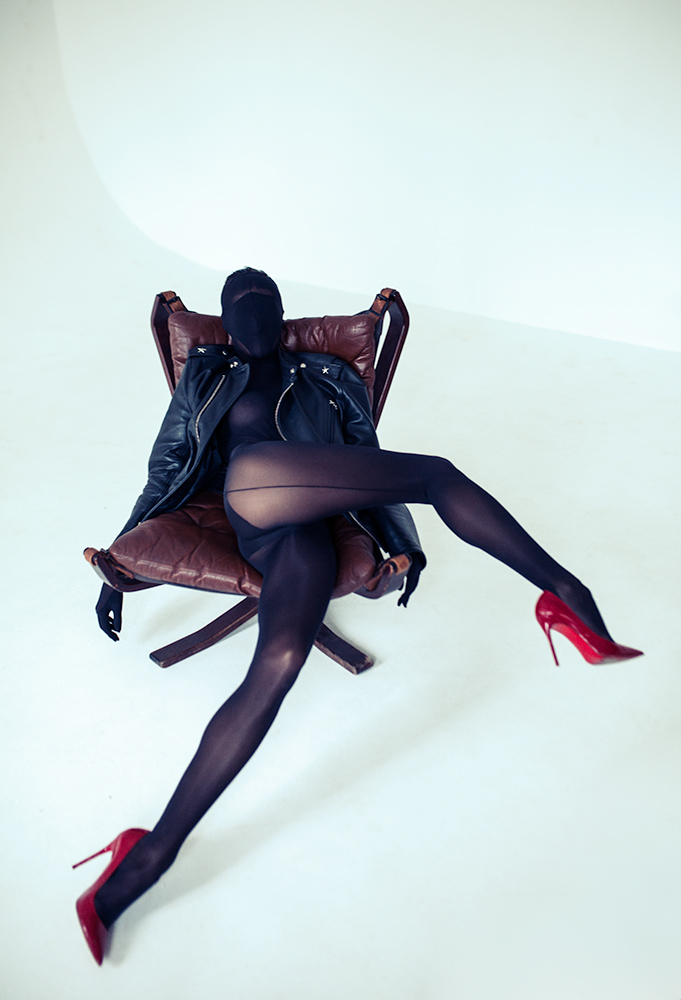
Julia approached me with the idea of a collaborative photoshoot. She sent me a few of my photographs that she liked and shared her Instagram account. Her photos emitted a special energy and aura that were easily noticeable. It's hard to articulate why, but something about them captivated me, and I became very interested in interpreting her beauty and energy through my vision. We began organizing the shoot.
We photographed in the studio, and Julia prepared her wardrobe choices, including some pieces from the DSMT collection, which perfectly complemented our shared mood boards. I was amazed to learn that Julia is a mother of three children and yet she was in incredible shape.
I remember that it took us some time initially to find our rhythm and pace, but this often happens before something truly special emerges during a shoot. As we got to know each other and became more attuned, the photographs gradually became more unique. The shooting process itself and the interaction with Julia became a profound and creatively fulfilling experience.
In the end, we created a series of highly captivating and vibrant photographs that remain some of my favorites throughout my career.
The photograph above illustrates the peak of female strength and beauty within my creative exploration. Although the pose may appear aggressive at first glance, it's not about raw power or violence per se, but rather about a more creative and constructive force that showcases undeniable beauty in this world.
The poses in these photographs are intricate, but given the extraordinary physical preparedness of the model, we were able to create interesting compositions and dynamics within the frame.
Julia was incredibly flexible and could assume any possible, and sometimes seemingly impossible, pose. Often during this shoot, I simply moved around Julia, who was engaged in a sort of deep meditative tantric dance. It's difficult to put into words, but it was a creative revelation that generously enveloped us.
At that time, this photograph also deeply reflected the complex and powerful processes happening within me. Through Julia's reflection, I discovered an even more distinct artistic interpretation of the female image that I aspire to capture in my photographs.
This photograph portrays a confident woman—strong, desired, provocative, and simultaneously gentle, loving, and vulnerable.
We photographed in the studio, and Julia prepared her wardrobe choices, including some pieces from the DSMT collection, which perfectly complemented our shared mood boards. I was amazed to learn that Julia is a mother of three children and yet she was in incredible shape.
I remember that it took us some time initially to find our rhythm and pace, but this often happens before something truly special emerges during a shoot. As we got to know each other and became more attuned, the photographs gradually became more unique. The shooting process itself and the interaction with Julia became a profound and creatively fulfilling experience.
In the end, we created a series of highly captivating and vibrant photographs that remain some of my favorites throughout my career.
The photograph above illustrates the peak of female strength and beauty within my creative exploration. Although the pose may appear aggressive at first glance, it's not about raw power or violence per se, but rather about a more creative and constructive force that showcases undeniable beauty in this world.
The poses in these photographs are intricate, but given the extraordinary physical preparedness of the model, we were able to create interesting compositions and dynamics within the frame.
Julia was incredibly flexible and could assume any possible, and sometimes seemingly impossible, pose. Often during this shoot, I simply moved around Julia, who was engaged in a sort of deep meditative tantric dance. It's difficult to put into words, but it was a creative revelation that generously enveloped us.
At that time, this photograph also deeply reflected the complex and powerful processes happening within me. Through Julia's reflection, I discovered an even more distinct artistic interpretation of the female image that I aspire to capture in my photographs.
This photograph portrays a confident woman—strong, desired, provocative, and simultaneously gentle, loving, and vulnerable.
QUOTE
" Photographers have to make the clothes look fantastic; that's why we get paid. "
― Patrick Demarchelier
― Patrick Demarchelier

"The Editor's Eye" is a documentary film directed by Fenton Bailey and Randy Barbato that explores the history and influence of fashion editors at Vogue magazine. The film features interviews with current and former Vogue editors, including Anna Wintour, Grace Coddington, and Tonne Goodman, as well as behind-the-scenes footage of photo shoots and editorial meetings. It was released in 2012 and received positive reviews for its insight into the creative process behind the iconic fashion publication.
"Dior and I" is a 2014 documentary film that chronicles the creation of Raf Simons' first Haute Couture collection for Christian Dior in 2012. The film follows Simons, who had recently been appointed creative director of Dior, as he worked closely with the atelier's seamstresses, embroiderers, and other artisans to bring his vision to life. The documentary also explores the legacy of the Dior fashion house and its history of collaborations with some of the most renowned designers of the 20th century. Directed by Frédéric Tcheng, "Dior and I" received critical acclaim for its intimate look at the creative process behind one of the most iconic fashion houses in the world.
"The September Issue" is a documentary film that provides an inside look at the production of the September 2007 issue of American Vogue magazine. The film follows Anna Wintour, the influential editor-in-chief of Vogue, and her team as they work on the magazine's largest issue of the year, featuring fashion spreads and articles from renowned photographers, writers, and designers. The film also explores the relationship between Wintour and her staff, particularly her creative director, Grace Coddington. The documentary received positive reviews and was praised for its insight into the fashion industry and the creative process behind a major fashion magazine.
"Bill Cunningham New York" is a documentary film directed by Richard Press, which premiered in 2010. The film focuses on the life and work of Bill Cunningham, a legendary street fashion photographer and longtime contributor to The New York Times. The documentary follows Cunningham as he documents the fashion scene in New York City, often on his bicycle, and features interviews with colleagues and fashion insiders who discuss his unique and influential approach to photography. The film also explores Cunningham's personal life and his dedication to his work, which he continued until his death in 2016.
"The First Monday in May" is a documentary film that takes a behind-the-scenes look at the creation of the Metropolitan Museum of Art's Costume Institute exhibit and the accompanying Met Gala, which is one of the biggest events in the fashion world. The film follows the preparations for the 2015 exhibit "China: Through the Looking Glass" and features interviews with key figures in the fashion industry, including curator Andrew Bolton, Vogue editor-in-chief Anna Wintour, and designer Karl Lagerfeld. The film explores the intersection of fashion and art, as well as the significance of the Met Gala as a platform for designers to showcase their work and celebrities to make a statement with their fashion choices.
"The True Cost" is a documentary film that explores the impact of fast fashion on people and the planet. It examines the environmental and social costs of cheap clothing production, including the exploitation of workers in developing countries and the pollution of waterways and farmlands. The film features interviews with experts in the fashion industry and activists who are working to promote sustainable and ethical fashion practices. It also highlights the work of designers who are creating innovative and environmentally-friendly clothing lines. The film urges consumers to consider the true cost of their clothing choices and to support companies that prioritize sustainability and social responsibility.
"Dior and I" is a 2014 documentary film that chronicles the creation of Raf Simons' first Haute Couture collection for Christian Dior in 2012. The film follows Simons, who had recently been appointed creative director of Dior, as he worked closely with the atelier's seamstresses, embroiderers, and other artisans to bring his vision to life. The documentary also explores the legacy of the Dior fashion house and its history of collaborations with some of the most renowned designers of the 20th century. Directed by Frédéric Tcheng, "Dior and I" received critical acclaim for its intimate look at the creative process behind one of the most iconic fashion houses in the world.
"The September Issue" is a documentary film that provides an inside look at the production of the September 2007 issue of American Vogue magazine. The film follows Anna Wintour, the influential editor-in-chief of Vogue, and her team as they work on the magazine's largest issue of the year, featuring fashion spreads and articles from renowned photographers, writers, and designers. The film also explores the relationship between Wintour and her staff, particularly her creative director, Grace Coddington. The documentary received positive reviews and was praised for its insight into the fashion industry and the creative process behind a major fashion magazine.
"Bill Cunningham New York" is a documentary film directed by Richard Press, which premiered in 2010. The film focuses on the life and work of Bill Cunningham, a legendary street fashion photographer and longtime contributor to The New York Times. The documentary follows Cunningham as he documents the fashion scene in New York City, often on his bicycle, and features interviews with colleagues and fashion insiders who discuss his unique and influential approach to photography. The film also explores Cunningham's personal life and his dedication to his work, which he continued until his death in 2016.
"The First Monday in May" is a documentary film that takes a behind-the-scenes look at the creation of the Metropolitan Museum of Art's Costume Institute exhibit and the accompanying Met Gala, which is one of the biggest events in the fashion world. The film follows the preparations for the 2015 exhibit "China: Through the Looking Glass" and features interviews with key figures in the fashion industry, including curator Andrew Bolton, Vogue editor-in-chief Anna Wintour, and designer Karl Lagerfeld. The film explores the intersection of fashion and art, as well as the significance of the Met Gala as a platform for designers to showcase their work and celebrities to make a statement with their fashion choices.
"The True Cost" is a documentary film that explores the impact of fast fashion on people and the planet. It examines the environmental and social costs of cheap clothing production, including the exploitation of workers in developing countries and the pollution of waterways and farmlands. The film features interviews with experts in the fashion industry and activists who are working to promote sustainable and ethical fashion practices. It also highlights the work of designers who are creating innovative and environmentally-friendly clothing lines. The film urges consumers to consider the true cost of their clothing choices and to support companies that prioritize sustainability and social responsibility.
02. UNIT PRE-PRODUCTION / BE PRO-ACTIVE
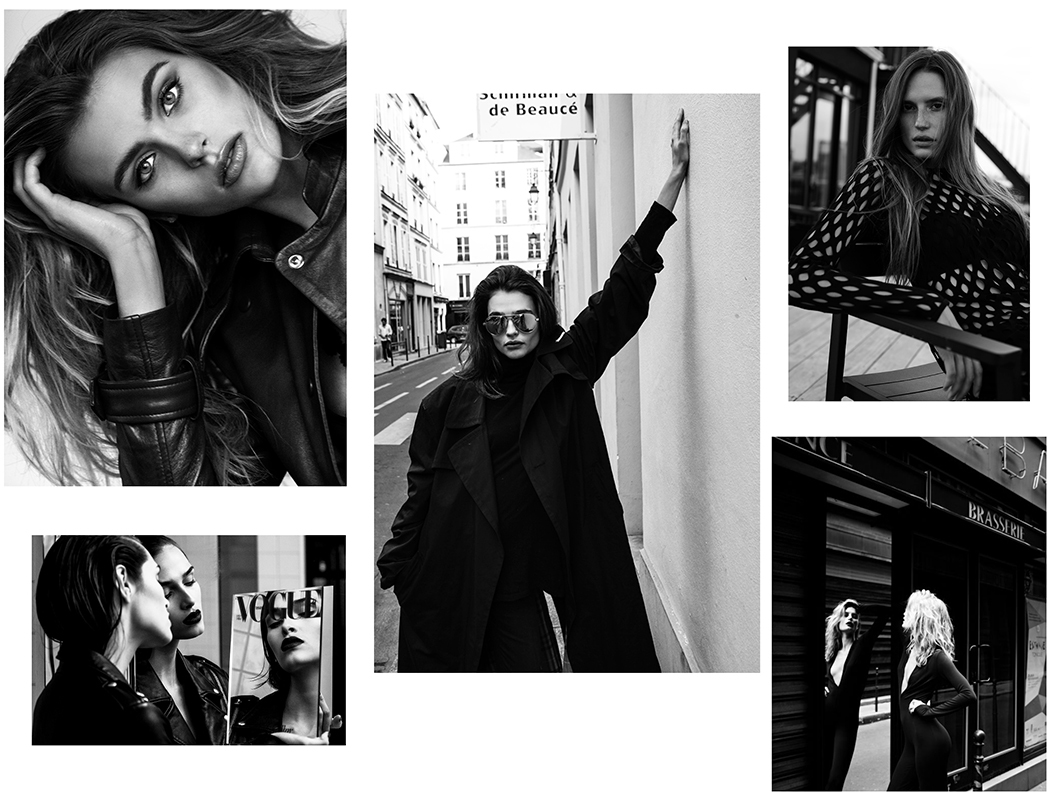
When a photographer has no bookings, there are several important actions that can be taken:
Improving skills: This is a great time to enhance photography skills. One can explore new techniques, participate in online courses, experiment with new equipment, and practice different styles. This will broaden one's horizons and enhance professional abilities.
Personal projects: Personal projects allow photographers to experiment and create without the constraints of client expectations. It's a time for self-expression and developing one's own style. Personal projects can also serve as excellent material for portfolios and showcase the photographer in a new light.
Networking: In the absence of bookings, it is important to actively build and maintain connections with other photographers, stylists, models, and industry professionals. Participating in events, joining social media communities, and networking with people in the industry can lead to new future opportunities.
Marketing and promotion: Photographers should continue to work on marketing their business even when there are no bookings. This is a time to update and optimize websites, create social media content, develop marketing materials, and attract new clients. Strong marketing efforts will help gain attention and increase the chances of future bookings.
Self-care: It is important to prioritize self-care during periods without bookings. The photography business can be stressful, so photographers should dedicate time to rest, rejuvenation, and self-care. Finding a balance between work and personal life, spending time with loved ones, engaging in other hobbies, will help prevent burnout.
Exploration and inspiration: During periods without bookings, one can dedicate time to explore the work of other photographers and artists. Reading books, studying magazines, visiting exhibitions, and exploring various sources of inspiration will help develop creative vision and enrich one's work with new ideas and concepts.
Education and knowledge-sharing: Participating in photography seminars, workshops, and webinars can be beneficial during periods without bookings. It's a time to deepen knowledge and skills, as well as exchange experiences with other photographers. Education and knowledge-sharing will help expand professional networks and improve work.
Updating and organizing materials: During periods without bookings, one can allocate time to update and organize their photographs and materials. This includes editing and selecting the best shots, updating portfolios, and creating a system for storing and organizing work. Such an approach will ensure readiness for future bookings and projects.
Improving skills: This is a great time to enhance photography skills. One can explore new techniques, participate in online courses, experiment with new equipment, and practice different styles. This will broaden one's horizons and enhance professional abilities.
Personal projects: Personal projects allow photographers to experiment and create without the constraints of client expectations. It's a time for self-expression and developing one's own style. Personal projects can also serve as excellent material for portfolios and showcase the photographer in a new light.
Networking: In the absence of bookings, it is important to actively build and maintain connections with other photographers, stylists, models, and industry professionals. Participating in events, joining social media communities, and networking with people in the industry can lead to new future opportunities.
Marketing and promotion: Photographers should continue to work on marketing their business even when there are no bookings. This is a time to update and optimize websites, create social media content, develop marketing materials, and attract new clients. Strong marketing efforts will help gain attention and increase the chances of future bookings.
Self-care: It is important to prioritize self-care during periods without bookings. The photography business can be stressful, so photographers should dedicate time to rest, rejuvenation, and self-care. Finding a balance between work and personal life, spending time with loved ones, engaging in other hobbies, will help prevent burnout.
Exploration and inspiration: During periods without bookings, one can dedicate time to explore the work of other photographers and artists. Reading books, studying magazines, visiting exhibitions, and exploring various sources of inspiration will help develop creative vision and enrich one's work with new ideas and concepts.
Education and knowledge-sharing: Participating in photography seminars, workshops, and webinars can be beneficial during periods without bookings. It's a time to deepen knowledge and skills, as well as exchange experiences with other photographers. Education and knowledge-sharing will help expand professional networks and improve work.
Updating and organizing materials: During periods without bookings, one can allocate time to update and organize their photographs and materials. This includes editing and selecting the best shots, updating portfolios, and creating a system for storing and organizing work. Such an approach will ensure readiness for future bookings and projects.
THAT WAS 5 % FROM 02. UNIT
03. UNIT / SHOOTING
10.
TEAMS
MODELS
11.
EQUIPMENT
DIFFERENT TYPES OF LIGHTNING
CASE STUDIES
12.
INDOOR VS. OUTDOOR
13.
THE SPECIFIC OF EROTIC PHOTOGRAPHY
TEAMS
MODELS
- building teams
- engaging with the team and model
- what makes a great model
11.
EQUIPMENT
DIFFERENT TYPES OF LIGHTNING
CASE STUDIES
- learning from masters
- breaking down in details what techniques and methods
I used to create my photographs - natural vs. strobes vs. continuous vs. led light
12.
INDOOR VS. OUTDOOR
- how to efficiently observe and utilize the space on a set
- airbnb & hotels & apartments
- lofts & studios & location
13.
THE SPECIFIC OF EROTIC PHOTOGRAPHY
- eros
- first experiments
- erotic portraits
- maintaining aesthetics
03. UNIT / SHOOTING
Building teams and engaging with models, highlighting what makes a top model. Learning from masters, the techniques and methods used to create stunning photographs.
Different types of lighting used in photography, including natural, strobe, continuous, and LED lights. Tips on how to efficiently observe and use space on a set, including working on outdoor and indoor locations.
My experiences with erotic photography, including my first experiments and the creation of erotic pictures while maintaining aesthetics.
Specifics of shooting in the fashion industry, including the differences between commercial and personal work, rates, and negotiations. Articles, documentaries, and magazines on fashion, as well as guidance on creating concepts and managing prices and costs.
03. UNIT SHOOTING / SILK ROAD
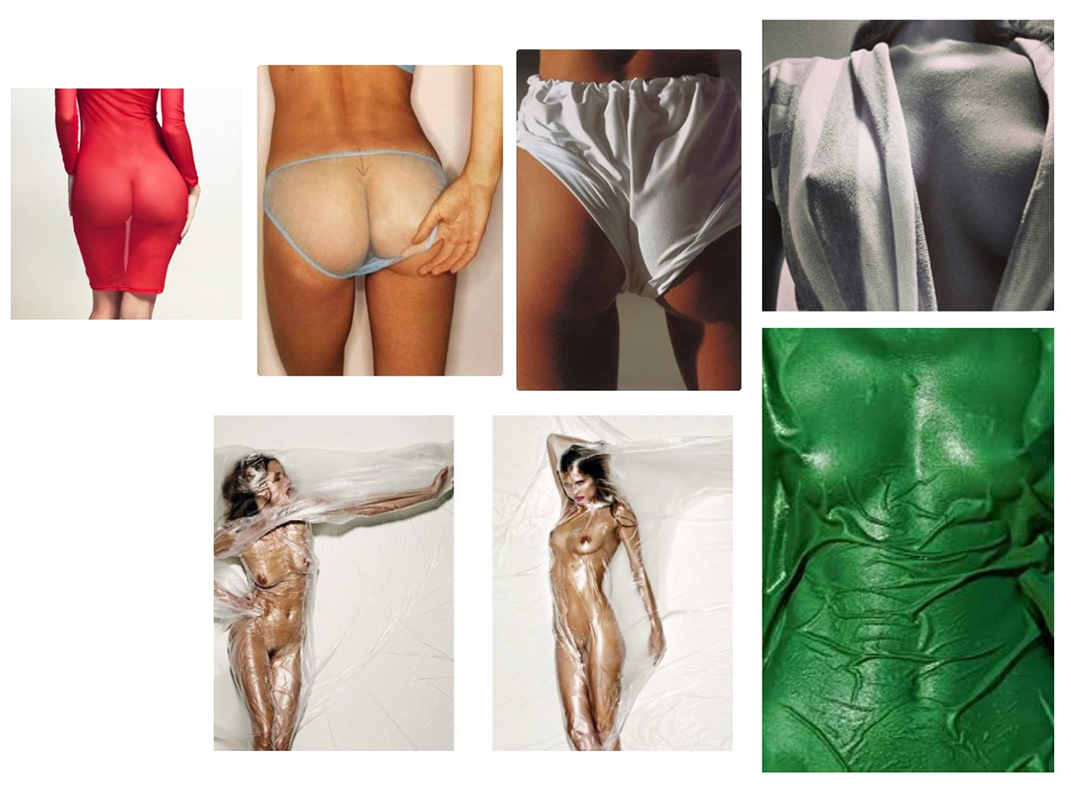
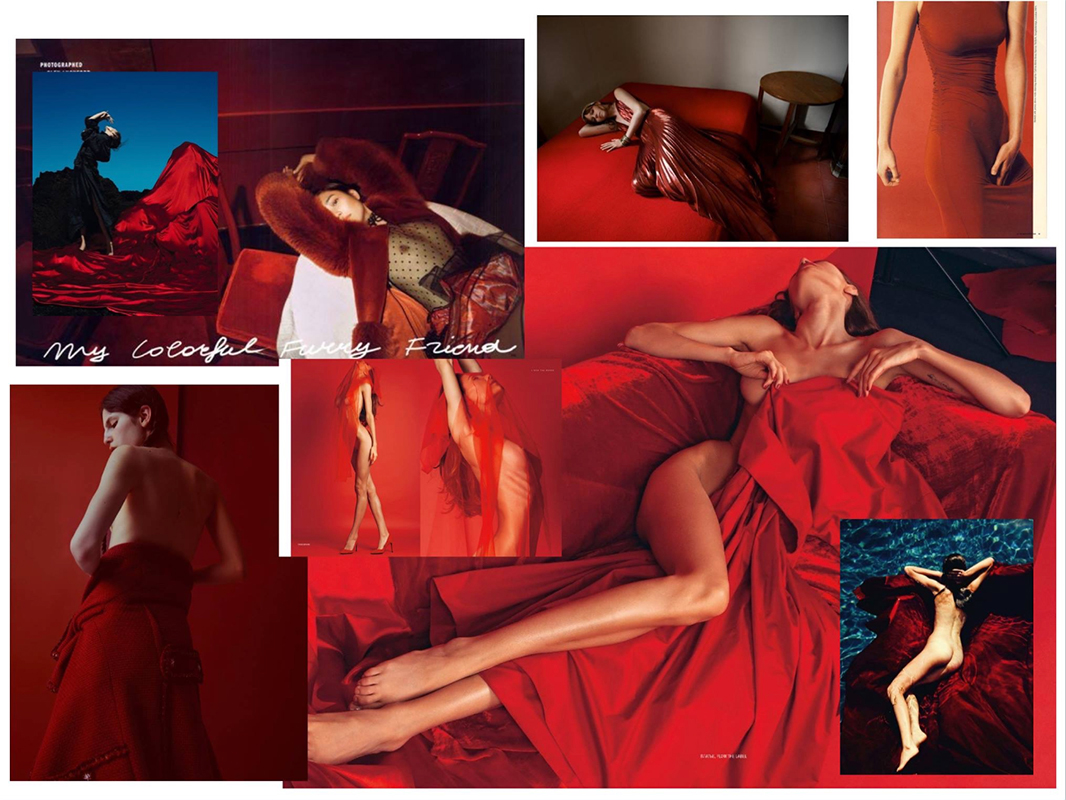
It was an ambitious project in which my friend and talented photographer Timofey Kolesnikov invited me to participate. Denis Simachev, a well-known designer and art director, was in charge of the entire project, and together we developed a mood board for the shoot. As part of the major international car races planned on new tracks, an image calendar needed to be created.
The idea was to convey movement and dynamics, as well as incorporate the national colors of the two countries - Russia and China, which were the main organizers of the races.
For this project, we enlisted the help of renowned fashion editor Olga Dunina from Russian Vogue as the stylist.
To find a model, we were looking for an experienced and high-caliber model, and I reached out to Hanna Jirickova, with whom we had previously worked on photo sessions in Paris. She was the perfect choice, and luckily, she agreed to participate and flew to Moscow to be our model for the shoot.
We were inspired by the works of Herb Ritts, who skillfully played with fabric and body forms.
The idea was to convey movement and dynamics, as well as incorporate the national colors of the two countries - Russia and China, which were the main organizers of the races.
For this project, we enlisted the help of renowned fashion editor Olga Dunina from Russian Vogue as the stylist.
To find a model, we were looking for an experienced and high-caliber model, and I reached out to Hanna Jirickova, with whom we had previously worked on photo sessions in Paris. She was the perfect choice, and luckily, she agreed to participate and flew to Moscow to be our model for the shoot.
We were inspired by the works of Herb Ritts, who skillfully played with fabric and body forms.
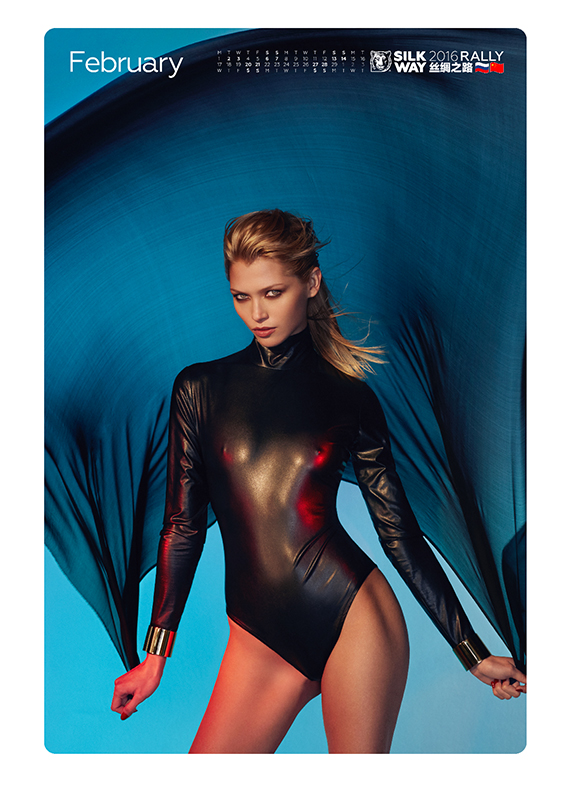

03. UNIT SHOOTING / SILK ROAD

When working with professional models, their talent in front of the camera is a key element in creating striking photographs. However, my task goes beyond simply setting up lighting and posing. I also strive to capture their unique individuality, making each shot truly special.
Effective communication plays an important role in a successful shoot. I aim to create a comfortable and trusting atmosphere where the model feels confident and can express their individuality. It is important to be respectful, provide clear instructions, and be open to their ideas.
Establishing a connection with the model is crucial for achieving the desired results. I try to create a fun and relaxed atmosphere where models feel natural and trust me.
I always treat models with great respect and professionalism. Building positive working relationships not only helps me create excellent photographs but also helps me earn a reputation as a photographer that models want to work with.
Effective communication plays an important role in a successful shoot. I aim to create a comfortable and trusting atmosphere where the model feels confident and can express their individuality. It is important to be respectful, provide clear instructions, and be open to their ideas.
Establishing a connection with the model is crucial for achieving the desired results. I try to create a fun and relaxed atmosphere where models feel natural and trust me.
I always treat models with great respect and professionalism. Building positive working relationships not only helps me create excellent photographs but also helps me earn a reputation as a photographer that models want to work with.
QUOTE
" I wish I could say the same for the young women who were just on the runways at the New York fall collections. Overall, they were pale and thin, and entirely lacking in the joyfulness and charm that once defined the supermodel. This, of course, is not their fault: Designers now near-uniformly favor a non-vivacious, homogenous ideal."
― Anna Wintour
― Anna Wintour

In recent years, the fashion industry has undergone significant changes aimed at inclusivity and diversity. These changes have led to models of all ages, sizes, ethnicities, and backgrounds becoming more visible and recognized on fashion runways and in campaigns. Opening the doors to diversity has made the modeling world more representative and reflective of society's reality.
This shift in model representation has also brought about changes in how they are photographed and presented. Now, in photoshoots and advertising materials, it is increasingly common to see models of different body types, with diverse facial features and styles. Photographers and brands have started striving to create images that reflect the diversity of beauty and allow each model to express their uniqueness.
Social media has become a powerful tool for models, enabling them to build their own personal brand and establish a direct connection with their audience. Through platforms like Instagram and YouTube, models can showcase not only their external beauty but also share their thoughts, values, and perspectives on fashion. This helps them establish personal interaction with fans and become influential figures in the fashion industry.
Furthermore, the growing awareness and implementation of sustainable practices in the fashion industry are important trends in recent years. More and more brands are seeking to use environmentally friendly materials, reduce resource consumption, and minimize waste. Models who support and adhere to sustainable principles have the opportunity to influence the industry and be part of the movement towards more responsible fashion.
This shift in model representation has also brought about changes in how they are photographed and presented. Now, in photoshoots and advertising materials, it is increasingly common to see models of different body types, with diverse facial features and styles. Photographers and brands have started striving to create images that reflect the diversity of beauty and allow each model to express their uniqueness.
Social media has become a powerful tool for models, enabling them to build their own personal brand and establish a direct connection with their audience. Through platforms like Instagram and YouTube, models can showcase not only their external beauty but also share their thoughts, values, and perspectives on fashion. This helps them establish personal interaction with fans and become influential figures in the fashion industry.
Furthermore, the growing awareness and implementation of sustainable practices in the fashion industry are important trends in recent years. More and more brands are seeking to use environmentally friendly materials, reduce resource consumption, and minimize waste. Models who support and adhere to sustainable principles have the opportunity to influence the industry and be part of the movement towards more responsible fashion.
- "How the Modeling Industry Has Changed Over the Years" (Harper's Bazaar)
The article discusses how the fashion industry has evolved in terms of representation, diversity, and inclusivity. It highlights the historic lack of diversity in fashion, with a focus on thin, white models, and how this is slowly changing with the rise of more diverse and inclusive representation. The article also discusses the impact of social media on the industry and how it has created new opportunities for models to gain exposure and build their careers. It touches on the topic of age inclusivity and how more models over the age of 40 are being featured in campaigns and on runways.
- "The Evolution of Modeling: A History of the Industry" (Fashionista)
It examines how the industry has evolved over time, from the days of silent films to the emergence of supermodels in the 1990s and the rise of social media in recent years. The article also discusses the impact of cultural and societal changes on the industry, such as the feminist movement and the growing demand for diversity and inclusivity. Additionally, it explores the role of technology and the changing landscape of the fashion industry, as brands and designers adapt to new technologies and consumer preferences.
- "The Changing Face of Modeling" (The New York Times)
"The Changing Face of Modeling" is an article published in The New York Times that explores the shift towards greater diversity in the modeling industry. The article examines how the fashion industry is slowly moving away from traditional beauty standards and embracing models of different ages, body types, and ethnic backgrounds. The author also discusses the role of social media and the influence it has had on the fashion industry's approach to diversity.
- "How Social Media Has Changed the Modeling Industry" (Teen Vogue)
This article discusses the impact of social media on the modeling industry, including how it has changed the way models are scouted, hired, and promoted. The author explores the rise of social media platforms like Instagram and their role in allowing models to build their own personal brands and reach a wider audience. The article also examines the potential downsides of social media, such as the pressure to maintain a certain image and the lack of diversity in the models who become social media stars.
- "From Twiggy to Kendall Jenner: How Modeling Has Changed in the Last 50 Years" (ELLE)
The article "From Twiggy to Kendall Jenner: How Modeling Has Changed in the Last 50 Years" by ELLE magazine examines the evolution of the modeling industry over the past half-century. It compares the standards and expectations for models in the past to the current era, including the rise of social media, the shift towards diversity and inclusivity, and the impact of technology on the industry. The article also explores the changing attitudes towards beauty and the impact that models have on popular culture.
- "The Impact of Diversity and Inclusivity on the Modeling Industry" (Vogue)
- "How Modeling Has Changed Since the 90s" (Marie Claire)
- "The Changing Definition of Beauty in Modeling" (CNN Style)
- "How Technology Is Revolutionizing the Modeling Industry" (Forbes)
- "The Power Shift in Modeling: Why Models Are Demanding More Than Just a Pretty Face" (Business of Fashion)
3.2 EXERCISE CASE STUDY - VIDEO BACKSTAGE
12 HOURS
In this video, you can see how the photographer and the designer lead the models, stylists, makeup artists, and other professionals to create magic on the set.
You notice how each team member plays their role in the process and how their synchronized interaction leads to the creation of stunning shots.
You see how they adapt to changes and find creative solutions to achieve the desired result.
In this video, you can see how the photographer and the designer lead the models, stylists, makeup artists, and other professionals to create magic on the set.
You notice how each team member plays their role in the process and how their synchronized interaction leads to the creation of stunning shots.
You see how they adapt to changes and find creative solutions to achieve the desired result.

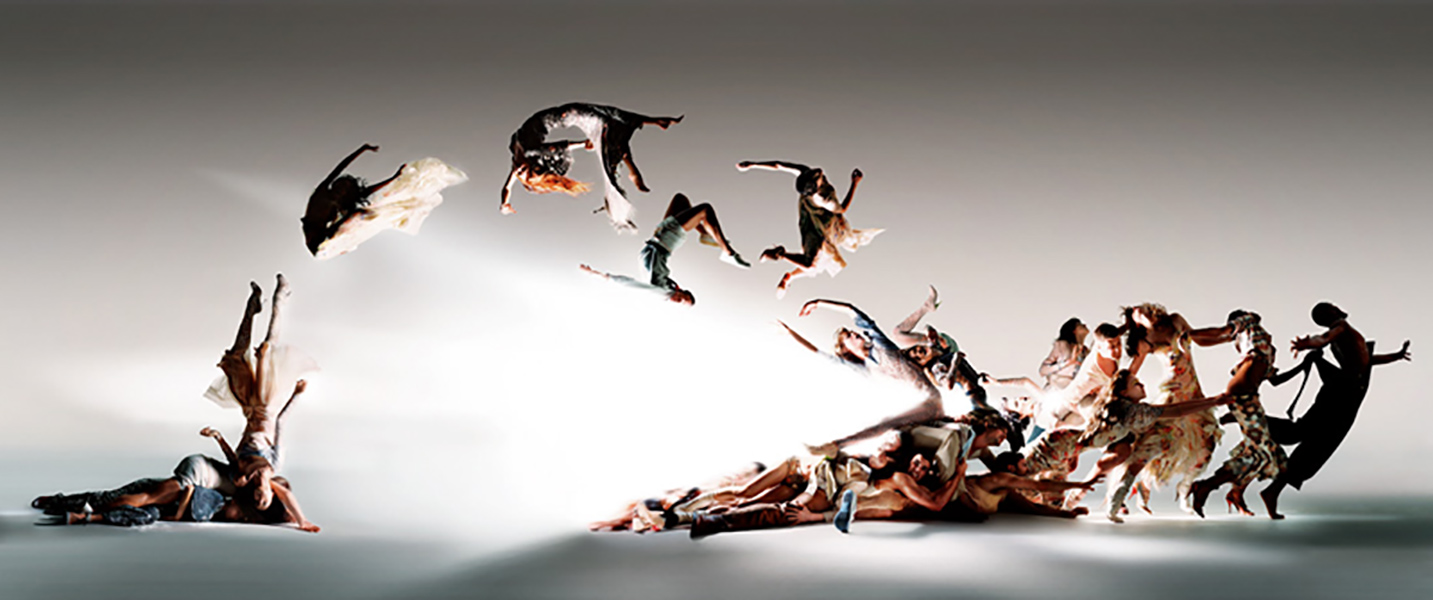
3.2 EXERCISE CASE STUDY - LIGHTNING SCHEMES
Your task is to explore ready-made lighting setups and compositions, which are widely available on Google, in order to apply them independently in your own photoshoots. Carefully study various lighting setups used in professional photography and select a few that you particularly like or that suit your shooting style.
Once you have studied the ready-made lighting setups, conduct your own photoshoots using these setups. Pay attention to how they impact the resulting images and how well they align with your expectations. Evaluate which lighting setups work best for you and how successfully you were able to adapt them to your own style and vision.
After that, you are encouraged to make changes and modify the ready-made lighting setups to better suit your needs and style. Experiment with different variations and incorporate your creative ideas into the process.
At the end of the assignment, take note of the results you have achieved and evaluate the effectiveness and success of your experiments.
The goal of the assignment is to develop your ability to apply ready-made lighting setups and then modify them to better align with your creative needs and photography style.
Once you have studied the ready-made lighting setups, conduct your own photoshoots using these setups. Pay attention to how they impact the resulting images and how well they align with your expectations. Evaluate which lighting setups work best for you and how successfully you were able to adapt them to your own style and vision.
After that, you are encouraged to make changes and modify the ready-made lighting setups to better suit your needs and style. Experiment with different variations and incorporate your creative ideas into the process.
At the end of the assignment, take note of the results you have achieved and evaluate the effectiveness and success of your experiments.
The goal of the assignment is to develop your ability to apply ready-made lighting setups and then modify them to better align with your creative needs and photography style.
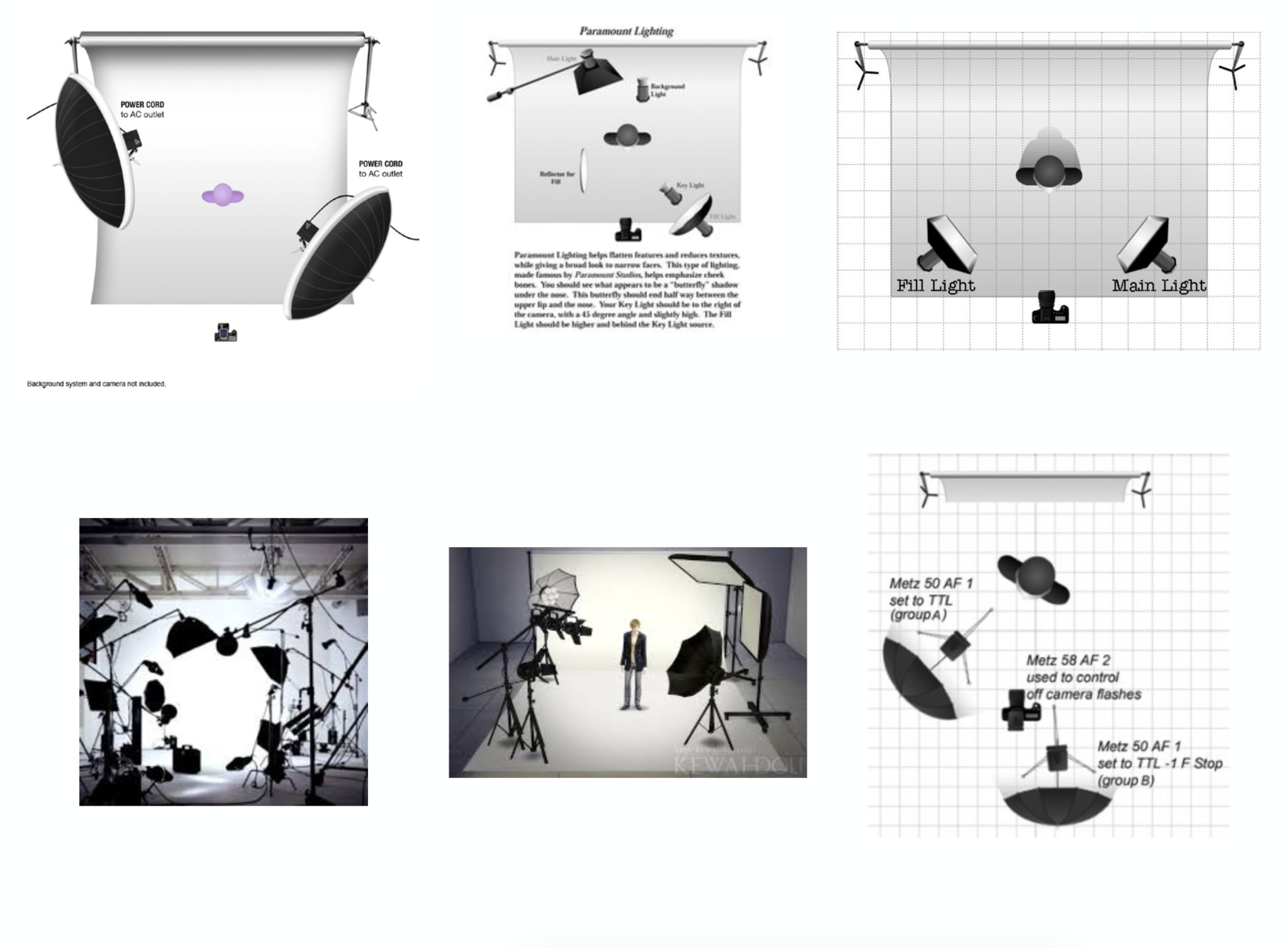
For me, experimenting with lighting is a key aspect of the creative process. I strive to explore different lighting setups during my shoots to discover what works best for me.
However, my approach to lighting goes beyond simply memorizing and reproducing exact settings and compositions. I aim to gain a deeper understanding of how light influences the creation of different moods and effects in photography. This helps me develop my intuition and use lighting as a means to bring my creative vision to life.
When I had my own studio and acquired strobes, I often invited friends to try out different lighting setups together and see how they worked in practice. Initially, I would simply replicate lighting configurations, but over time, I started making modifications and experimenting to create more interesting and unique effects.
My advice to you is to not be afraid to experiment with lighting and find your own style. Explore different lighting setups, study the equipment, and try them out in your shoots. Observe the results and assess how well they align with your expectations and creative vision. Remember that experiments and changes can lead to the most unexpected and inspiring outcomes. So go ahead, explore new horizons in your photography, and enjoy the process!
However, my approach to lighting goes beyond simply memorizing and reproducing exact settings and compositions. I aim to gain a deeper understanding of how light influences the creation of different moods and effects in photography. This helps me develop my intuition and use lighting as a means to bring my creative vision to life.
When I had my own studio and acquired strobes, I often invited friends to try out different lighting setups together and see how they worked in practice. Initially, I would simply replicate lighting configurations, but over time, I started making modifications and experimenting to create more interesting and unique effects.
My advice to you is to not be afraid to experiment with lighting and find your own style. Explore different lighting setups, study the equipment, and try them out in your shoots. Observe the results and assess how well they align with your expectations and creative vision. Remember that experiments and changes can lead to the most unexpected and inspiring outcomes. So go ahead, explore new horizons in your photography, and enjoy the process!
03. UNIT SHOOTING / BREAKING DOWN IN DETAILS WHAT TECHNIQUES AND METHODS
I USED TO CREATE MY PHOTOGRAPHS
I USED TO CREATE MY PHOTOGRAPHS
3.2 CASE STUDY - SHOOTING IN FRONT OF THE WINDOW
Creating photographs with beautiful and sensual silhouettes using natural daylight can be a striking way to capture stunning full-length portraits. Natural daylight, especially during the presence of diffused light or during the early morning or late evening hours, creates soft shadows and contours around the subject, emphasizing the shape and texture of the body.
This lighting effect can add depth, emotion, and sensuality to the photographs. The silhouette, created by the contrast between the illuminated subject and the dark background, can evoke mystery and leave room for imagination and interpretation by the viewer.
To create such full-length silhouette photographs using natural daylight, it is important to choose the right time for shooting. Early morning hours or the late evening, known as the "golden hour" or the "blue hour," possess a special quality of light that can lend softness, warmth, or coolness to your photographs depending on the season and atmospheric conditions.
Composition also plays a significant role in full-length silhouette portraits. The positioning of the model and their pose can enhance the visual impact of the silhouette and accentuate their physical form. Experimenting with different angles and the placement of the light can help achieve the desired effect.
Remember that each silhouette portrait is unique, and the process of experimentation and searching for the right moment and light can be inspiring and creative. Embrace the uniqueness of each moment and let the natural light guide you in capturing beautiful and sensual silhouettes that leave a lasting impression.
This lighting effect can add depth, emotion, and sensuality to the photographs. The silhouette, created by the contrast between the illuminated subject and the dark background, can evoke mystery and leave room for imagination and interpretation by the viewer.
To create such full-length silhouette photographs using natural daylight, it is important to choose the right time for shooting. Early morning hours or the late evening, known as the "golden hour" or the "blue hour," possess a special quality of light that can lend softness, warmth, or coolness to your photographs depending on the season and atmospheric conditions.
Composition also plays a significant role in full-length silhouette portraits. The positioning of the model and their pose can enhance the visual impact of the silhouette and accentuate their physical form. Experimenting with different angles and the placement of the light can help achieve the desired effect.
Remember that each silhouette portrait is unique, and the process of experimentation and searching for the right moment and light can be inspiring and creative. Embrace the uniqueness of each moment and let the natural light guide you in capturing beautiful and sensual silhouettes that leave a lasting impression.
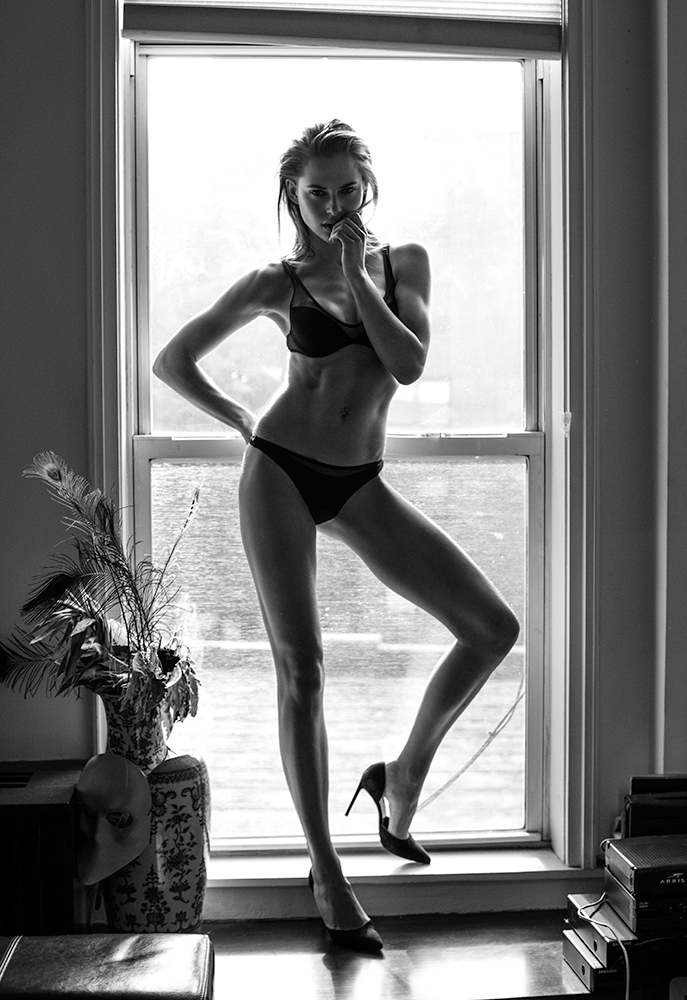
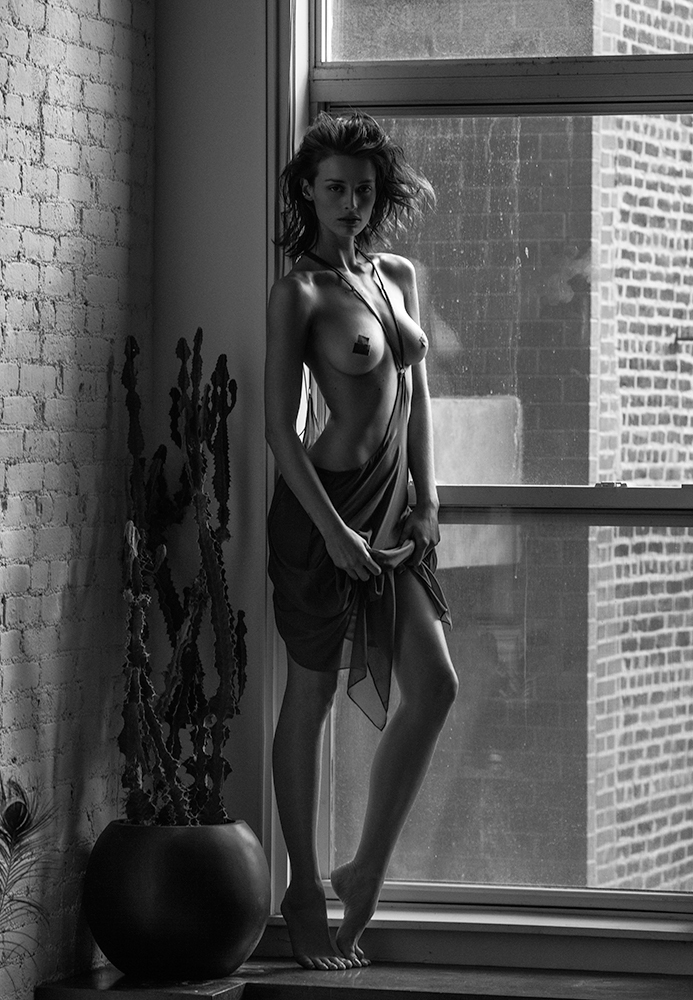
3.2 CASE STUDY - LONG EXPOSURE
In studio photography using studio lighting, I often employ long exposure techniques.
This technique allows me to create various effects, such as a blurred contour around the subject or streaks/light trails, which convey a sense of movement and infuse the image with energy and vibrancy.
This technique allows me to create various effects, such as a blurred contour around the subject or streaks/light trails, which convey a sense of movement and infuse the image with energy and vibrancy.
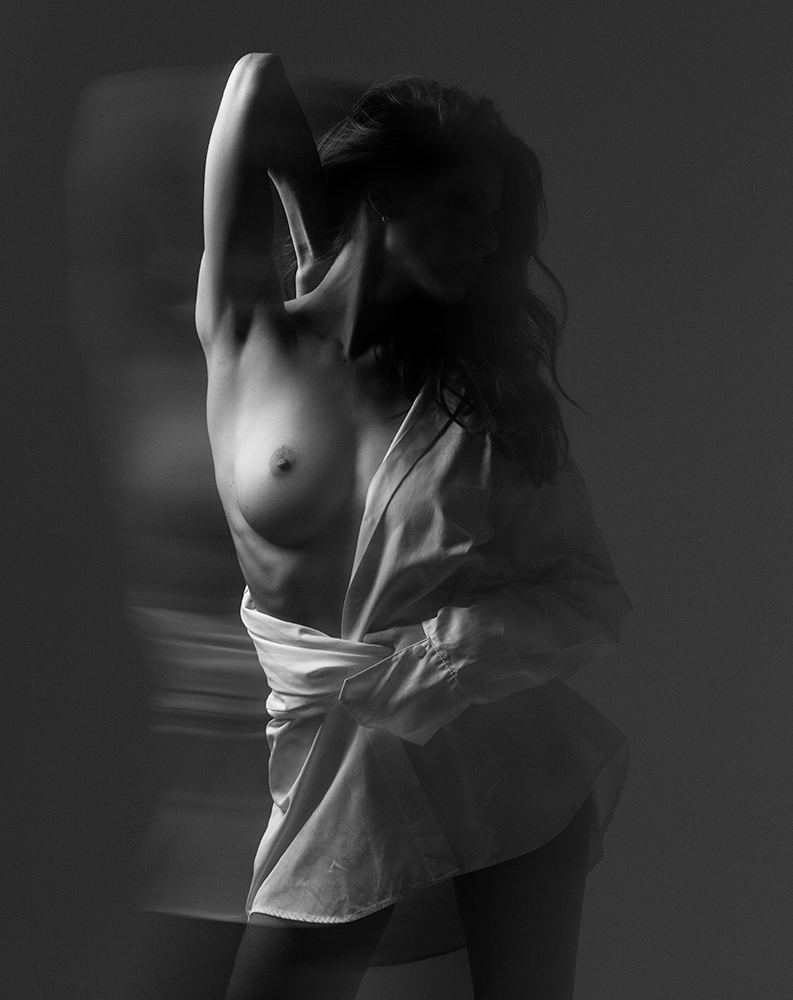

3.2 CASE STUDY - PROJECTOR
I often use a projector in my photography. It's an interesting way to add originality and uniqueness to the composition and narrative of the frame. By connecting the projector to a computer, I can quickly change the colors, patterns, and images that are projected onto the models or the background.
This approach allows me to create amazing effects and transform ordinary shots. I can alter the background, add intriguing details, and create a new atmosphere. The projector also helps me play with lighting, generating unique light and shadow effects that give depth and dimension to my photographs.
It's fascinating to experiment with different color combinations and create unique patterns. By using projections, I can set the mood and convey my artistic concept. This allows me to infuse my work with individuality and a distinctive visual style.
This approach allows me to create amazing effects and transform ordinary shots. I can alter the background, add intriguing details, and create a new atmosphere. The projector also helps me play with lighting, generating unique light and shadow effects that give depth and dimension to my photographs.
It's fascinating to experiment with different color combinations and create unique patterns. By using projections, I can set the mood and convey my artistic concept. This allows me to infuse my work with individuality and a distinctive visual style.

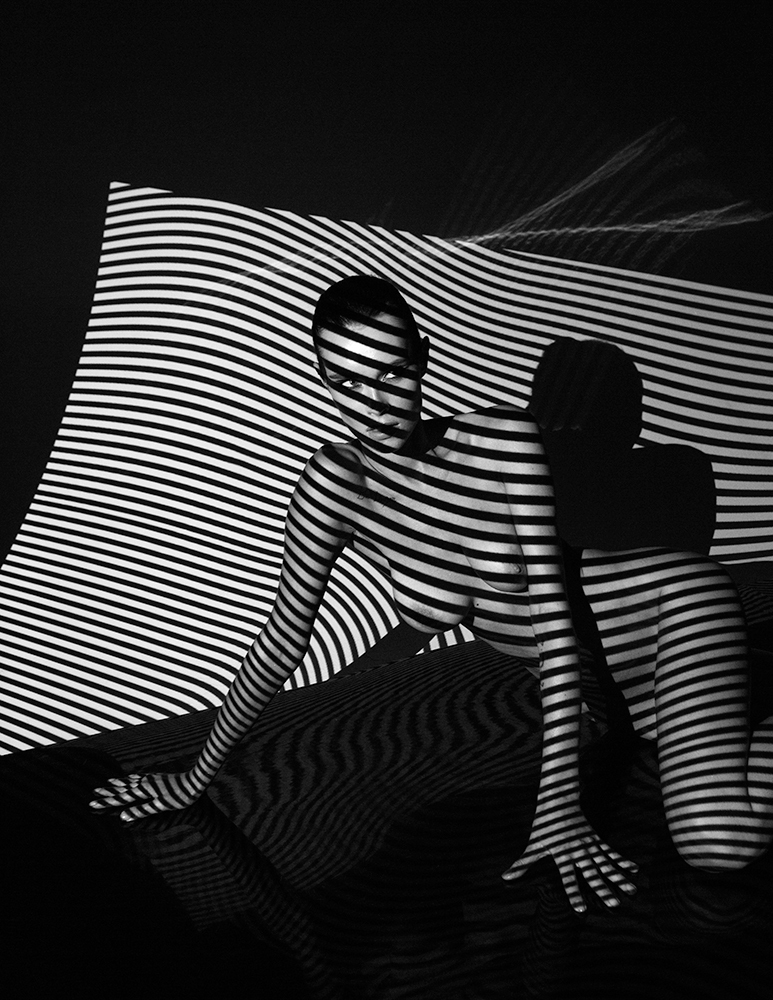

03. UNIT SHOOTING / HOTELS
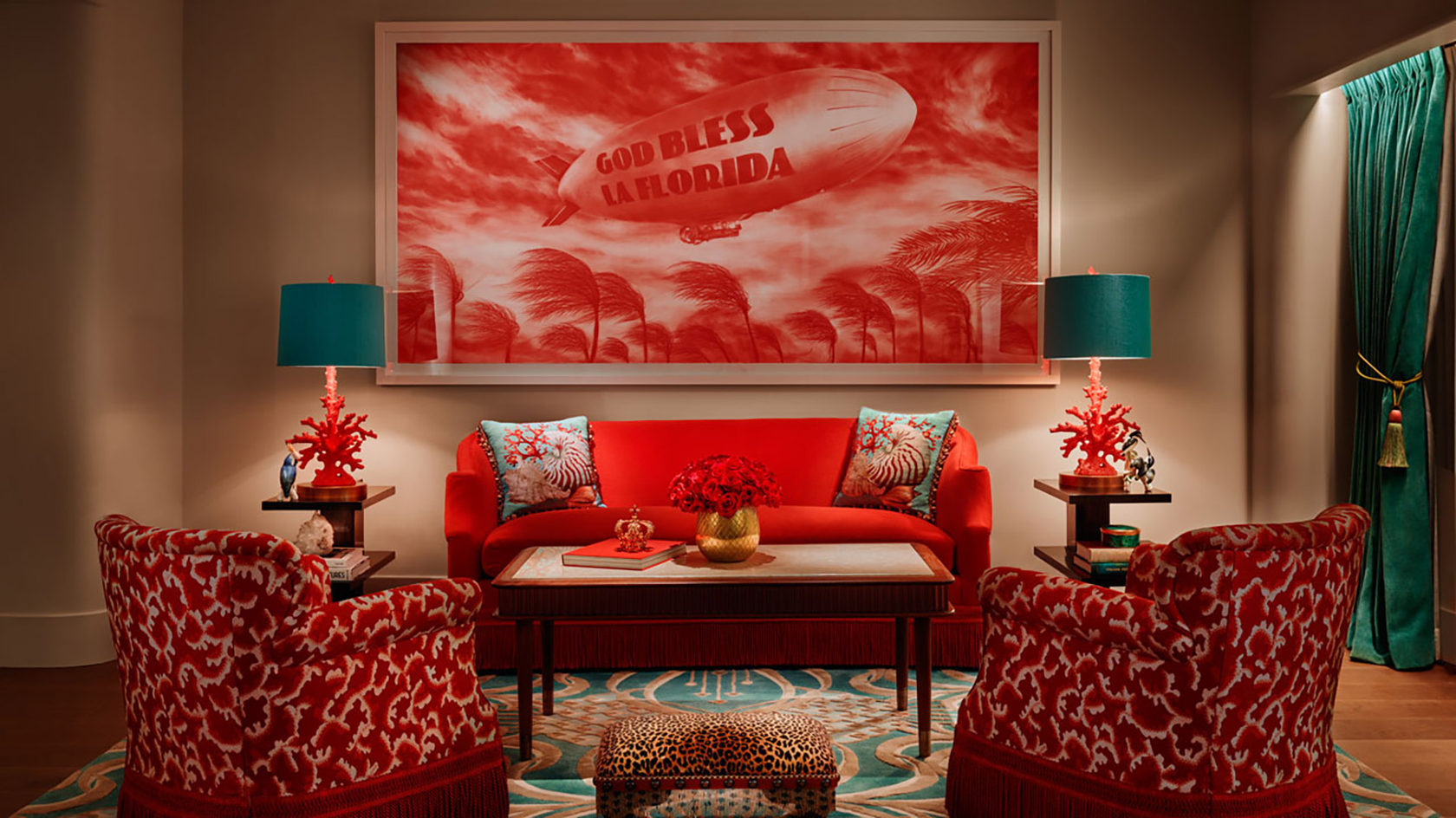
Choosing to do a photo shoot in a hotel is a practical and cost-effective solution compared to renting a full-fledged photo studio. Hotels have a unique atmosphere and cinematic charm, making them ideal for small projects and individual work with models.
In my work with private clients, I often recommend booking boutique hotels for photo sessions. This allows us to have enough time to bring our creative ideas to life. Non-professional models, especially in private shoots, feel more comfortable and relaxed posing in a hotel room rather than against the white walls of a studio.
However, it's important to keep in mind that photo shoots in hotels can present certain challenges, especially when dealing with a large team, as some hotels prohibit photography or may charge an additional fee. It's also important to consider that the lighting in hotel rooms may not always be ideal, and their sizes can be limited. This is particularly relevant in Paris, where hotel rooms can be small in size.
In my work with private clients, I often recommend booking boutique hotels for photo sessions. This allows us to have enough time to bring our creative ideas to life. Non-professional models, especially in private shoots, feel more comfortable and relaxed posing in a hotel room rather than against the white walls of a studio.
However, it's important to keep in mind that photo shoots in hotels can present certain challenges, especially when dealing with a large team, as some hotels prohibit photography or may charge an additional fee. It's also important to consider that the lighting in hotel rooms may not always be ideal, and their sizes can be limited. This is particularly relevant in Paris, where hotel rooms can be small in size.
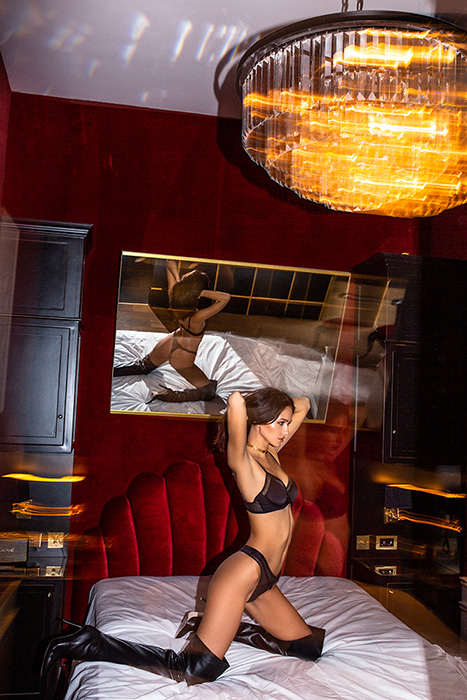
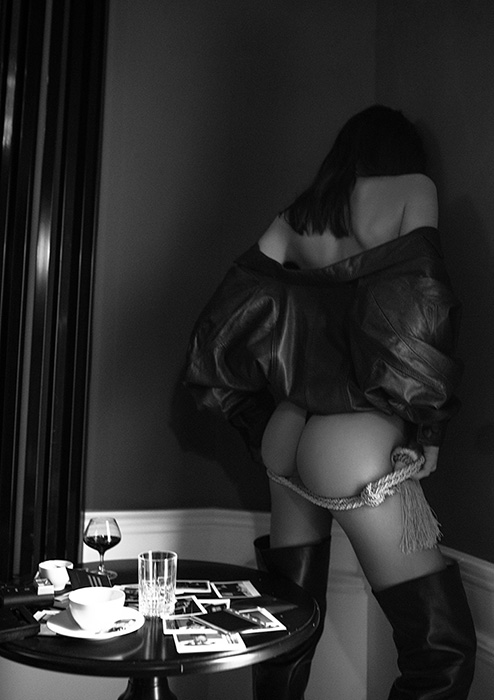
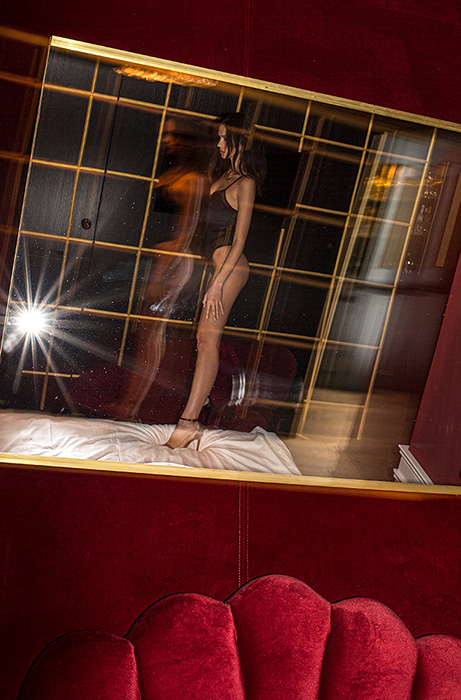
We have collaborated with Katya on multiple occasions in New York and Moscow, creating stunning photographs each time. When we both happened to be in Berlin at the same time, we decided to do a new photoshoot. We found a recently opened hotel called Provacateur, and the name itself indicated that it was the perfect place for us. I recommend visiting the hotel's website to feel the provocative atmosphere. It's rare to find hotels that can inspire you so much, even just through their design and website aesthetics.
As a photographer, I always find that shooting in hotels is a wonderful source of inspiration for creating a cinematic and artistic atmosphere in my work. The unique interiors and decor of hotels can add depth and character to the images, helping to set the mood and tell a story.
As a photographer, I always find that shooting in hotels is a wonderful source of inspiration for creating a cinematic and artistic atmosphere in my work. The unique interiors and decor of hotels can add depth and character to the images, helping to set the mood and tell a story.
03. UNIT SHOOTING / STUDIO



Using a studio for photoshoots offers numerous advantages, especially in terms of control over technical aspects. It allows me to use studio lighting, create various lighting effects, and comfortably prepare the looks and makeup. Furthermore, having catering and a fully equipped kitchen in the studio makes the shoot even more convenient.
For me, the ability to experiment with studio lighting is particularly valuable. Thanks to studio flashes or continuous lighting, I can achieve effects that are difficult or impossible to create using natural light outdoors. Such experiments help me find unique solutions and develop my own recognizable style.
Working in well-known studios adds prestige to my work. It may seem insignificant, but it creates a positive impression among clients and the audience. Studios are not only places with high-quality equipment and modern technology but also serve as a form of advertisement for me.
Additionally, shooting in a studio frees me from worrying about weather conditions. Many studios offer rental of necessary equipment, making the organization of the shoot easier. Moreover, by working in a studio, I can focus on the creative process, minimizing external distractions.
However, I understand that shooting exclusively in studios can lead to predictability and creative stagnation. Therefore, I always strive to find a balance between working in the studio and on various outdoor locations. The variety of locations allows me to seek new and inspiring narratives, maintaining interest and originality in my photographs. My goal is to avoid stereotypical images and constantly seek new unique and captivating ideas for my clients and audience.
For me, the ability to experiment with studio lighting is particularly valuable. Thanks to studio flashes or continuous lighting, I can achieve effects that are difficult or impossible to create using natural light outdoors. Such experiments help me find unique solutions and develop my own recognizable style.
Working in well-known studios adds prestige to my work. It may seem insignificant, but it creates a positive impression among clients and the audience. Studios are not only places with high-quality equipment and modern technology but also serve as a form of advertisement for me.
Additionally, shooting in a studio frees me from worrying about weather conditions. Many studios offer rental of necessary equipment, making the organization of the shoot easier. Moreover, by working in a studio, I can focus on the creative process, minimizing external distractions.
However, I understand that shooting exclusively in studios can lead to predictability and creative stagnation. Therefore, I always strive to find a balance between working in the studio and on various outdoor locations. The variety of locations allows me to seek new and inspiring narratives, maintaining interest and originality in my photographs. My goal is to avoid stereotypical images and constantly seek new unique and captivating ideas for my clients and audience.
QUOTE
" What I've realized through the years is that everybody sees something different in the picture.
They put themselves in the photograph and everybody sees what they want to see, and I'm perfectly happy with that. I think that's a great thing, actually. "
― Jurgen Teller
They put themselves in the photograph and everybody sees what they want to see, and I'm perfectly happy with that. I think that's a great thing, actually. "
― Jurgen Teller
03. UNIT SHOOTING / EROTIC VS. PORNOGRAPHIC PHOTOGRAPHERS

Throughout time, my approach to erotic photography has evolved. Today, I use semi-nude photographs in my shoots to accentuate the beauty and sensuality of the models while maintaining an artistic perspective.
It is important to me that these photographs do not come across as vulgar or border on pornography. I strive to uphold a certain level of aesthetic appeal. After all, there is a distinction between sensuality and overtly sexual content. One is a spiritual and somewhat poetic attraction, while the other is simply graphic and overly explicit.
Some people may criticize nude photography for objectifying the model, but I follow my instincts and do what I believe is right according to my own vision and perception of beauty.
At a certain point in my career, I made the decision to focus more on nude photography rather than fashion photography. It was not an easy decision for several reasons, including the fact that it required a higher level of technical knowledge and life experience.
One of the most crucial aspects of such shoots is building trust with the model. Additionally, this type of photography demands a great deal of responsibility towards the entire creative process and the resulting images.
It is important to me that these photographs do not come across as vulgar or border on pornography. I strive to uphold a certain level of aesthetic appeal. After all, there is a distinction between sensuality and overtly sexual content. One is a spiritual and somewhat poetic attraction, while the other is simply graphic and overly explicit.
Some people may criticize nude photography for objectifying the model, but I follow my instincts and do what I believe is right according to my own vision and perception of beauty.
At a certain point in my career, I made the decision to focus more on nude photography rather than fashion photography. It was not an easy decision for several reasons, including the fact that it required a higher level of technical knowledge and life experience.
One of the most crucial aspects of such shoots is building trust with the model. Additionally, this type of photography demands a great deal of responsibility towards the entire creative process and the resulting images.


QUOTE
" If I create anything I create an atmosphere of trust an opennes. "
― Sante D'Orazio
― Sante D'Orazio
I have always been drawn to the mystery surrounding the models I photograph in my shots. It is this enigma that drives me to create strong and impressive photographs. I strive to capture and convey something special in each woman, something that makes her unique and one-of-a-kind.
In my photographs, I aim to showcase not only outer beauty but also the inner essence of a woman. I seek to capture her emotions, her strength, and her vulnerability. My shots reflect feminine power and individuality, expressing the uniqueness of each model.
Each photograph tells a story through the portrayal of a character, pose, and facial expression. I strive to convey emotional depth and intimacy in the moment, allowing the viewer to feel the story I am trying to tell. I aim to create an atmosphere that captivates the imagination and sparks curiosity in the viewer.
It is important to me that every model feels comfortable and confident during the shoot. I strive to create a trusting atmosphere where the model can fully unfold and be herself. This helps me capture the true beauty and naturalness of a woman.
I believe that photographing models is not just about creating beautiful images; it is a process that helps each woman discover her inner strength and confidence. The opportunity to see oneself in a new light, to feel one's own attractiveness and self-affirmation, is a valuable experience for every model.
My ideal is to convey the beauty, elegance, and passion of the feminine image. I want each photograph to inspire and emphasize the uniqueness and power of women. My work reflects my love and respect for feminine energy.
In my photographs, I aim to showcase not only outer beauty but also the inner essence of a woman. I seek to capture her emotions, her strength, and her vulnerability. My shots reflect feminine power and individuality, expressing the uniqueness of each model.
Each photograph tells a story through the portrayal of a character, pose, and facial expression. I strive to convey emotional depth and intimacy in the moment, allowing the viewer to feel the story I am trying to tell. I aim to create an atmosphere that captivates the imagination and sparks curiosity in the viewer.
It is important to me that every model feels comfortable and confident during the shoot. I strive to create a trusting atmosphere where the model can fully unfold and be herself. This helps me capture the true beauty and naturalness of a woman.
I believe that photographing models is not just about creating beautiful images; it is a process that helps each woman discover her inner strength and confidence. The opportunity to see oneself in a new light, to feel one's own attractiveness and self-affirmation, is a valuable experience for every model.
My ideal is to convey the beauty, elegance, and passion of the feminine image. I want each photograph to inspire and emphasize the uniqueness and power of women. My work reflects my love and respect for feminine energy.
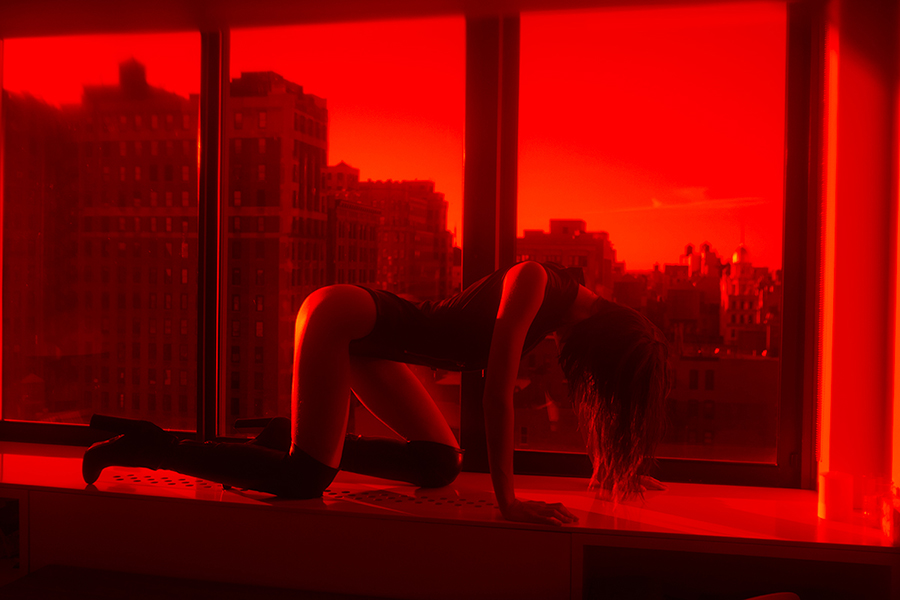

Sofia Coppola is famous for being an American film director, screenwriter, and actress. She has directed and written several critically acclaimed films, including "Lost in Translation," "Marie Antoinette," "The Bling Ring," and "On the Rocks." Coppola is known for her distinct visual style, often featuring themes of isolation, melancholy, and youthfulness in her works. She has won numerous awards for her films, including the Academy Award for Best Original Screenplay for "Lost in Translation."
Baz Luhrmann is an Australian film director, screenwriter, and producer. He is famous for his visually stunning and flamboyant films that often blend music, dance, and theatricality, making them unique and distinctive. His most famous films include "Moulin Rouge!," "Romeo + Juliet," "The Great Gatsby," and "Strictly Ballroom." Luhrmann is known for his vivid use of color, stylized camera movements, and his ability to merge modern pop culture with traditional stories. His films have been nominated for numerous Academy Awards and have won several other prestigious awards.
David LaChapelle is an American photographer and director who is famous for his highly stylized and surreal images, often characterized by their vibrant colors, irony, and social commentary. LaChapelle's photographs are widely recognized for their unique style, which mixes pop culture references, religious iconography, and surrealism. He has photographed numerous celebrities, including Madonna, Britney Spears, and Lady Gaga, and his work has been featured in magazines such as Vogue, Vanity Fair, and Rolling Stone. Additionally, he has directed music videos and commercials for various brands, which have also gained widespread recognition for their artistic and unusual approach.
Spike Jonze is an American filmmaker, photographer, and actor who is famous for his distinctive style in creating films that are surreal, imaginative, and often have elements of comedy and satire. He has directed several critically acclaimed movies, including "Being John Malkovich," "Adaptation," "Where the Wild Things Are," and "Her." Jonze is known for his ability to blend fantasy and reality in his films and his unique visual style. He has also directed music videos for various artists, including Weezer, Beastie Boys, and Fatboy Slim, which are known for their creativity and eccentricity. Jonze has won several awards for his work, including an Academy Award for Best Original Screenplay for "Her."
Jonas Akerlund is a Swedish filmmaker and music video director who is famous for his distinctive and visually striking work. He has directed several iconic music videos for famous artists, such as Madonna, Lady Gaga, Beyoncé, and Taylor Swift. His music videos are known for their experimental and unconventional approach, combining different artistic styles, such as animation, avant-garde, and surrealism. Akerlund has also directed several films, including "Lords of Chaos," a biopic about a Norwegian black metal band, and "Spun," a dark comedy-drama about drug addiction. In addition to his work in film and music videos, Akerlund has also directed commercials for high-profile brands such as H&M, Coca-Cola, and Nike.
Tom Ford - Tom Ford is an American fashion designer, film director, and entrepreneur. He is best known for his work as the creative director of Gucci and Yves Saint Laurent and for founding his eponymous luxury brand, Tom Ford. Ford's designs are characterized by their glamour, sensuality, and sophistication, and he has dressed many high-profile clients, including Beyoncé, Angelina Jolie, and Daniel Craig as James Bond. In addition to his fashion career, Ford has also directed two critically acclaimed films, A Single Man and Nocturnal Animals.
Matthew Frost - Matthew Frost is an American filmmaker and creative director. He has directed numerous short films and commercials for clients such as Vogue, Gucci, and Miu Miu, often featuring prominent celebrities and models. Frost's work is known for its sharp wit, satirical edge, and playful approach to fashion and pop culture. He has been praised for his ability to blend humor and social commentary into his films, and has won awards at several international film festivals.
Gordon von Steiner - Gordon von Steiner is a filmmaker and fashion photographer. He has directed fashion films and commercials for numerous high-profile clients, including Dior, Chanel, and Prada. Von Steiner's work is characterized by its bold visual style, dramatic lighting, and cinematic quality. His films often feature prominent models and celebrities, and have won awards at several international film festivals. In addition to his work in film, von Steiner has also produced striking fashion photography for publications such as Vogue, W Magazine, and Interview Magazine.
Romain Gavras - is a French-Greek filmmaker and music video director. He has directed music videos for many notable musicians, including M.I.A., Jay-Z, and Justice, and has won several awards for his work in the industry. Gavras' work is known for its gritty, realistic style and often controversial themes, exploring issues such as violence, social injustice, and political unrest. In addition to his work in music videos, Gavras has also directed several critically acclaimed feature films, including "Our Day Will Come" and "The World is Yours".
Gia Coppola - is an American filmmaker and photographer. She is best known for her directorial debut film, "Palo Alto," which was based on a collection of short stories by James Franco. Coppola's work is characterized by its dreamy, atmospheric quality, and explores themes such as adolescence, identity, and family dynamics. In addition to her film work, Coppola has also directed commercials for clients such as Levi's and Gucci, and has produced photography work for publications such as Vogue and Harper's Bazaar. She comes from a family of filmmakers, including her grandfather Francis Ford Coppola and her aunt Sofia Coppola.
Baz Luhrmann is an Australian film director, screenwriter, and producer. He is famous for his visually stunning and flamboyant films that often blend music, dance, and theatricality, making them unique and distinctive. His most famous films include "Moulin Rouge!," "Romeo + Juliet," "The Great Gatsby," and "Strictly Ballroom." Luhrmann is known for his vivid use of color, stylized camera movements, and his ability to merge modern pop culture with traditional stories. His films have been nominated for numerous Academy Awards and have won several other prestigious awards.
David LaChapelle is an American photographer and director who is famous for his highly stylized and surreal images, often characterized by their vibrant colors, irony, and social commentary. LaChapelle's photographs are widely recognized for their unique style, which mixes pop culture references, religious iconography, and surrealism. He has photographed numerous celebrities, including Madonna, Britney Spears, and Lady Gaga, and his work has been featured in magazines such as Vogue, Vanity Fair, and Rolling Stone. Additionally, he has directed music videos and commercials for various brands, which have also gained widespread recognition for their artistic and unusual approach.
Spike Jonze is an American filmmaker, photographer, and actor who is famous for his distinctive style in creating films that are surreal, imaginative, and often have elements of comedy and satire. He has directed several critically acclaimed movies, including "Being John Malkovich," "Adaptation," "Where the Wild Things Are," and "Her." Jonze is known for his ability to blend fantasy and reality in his films and his unique visual style. He has also directed music videos for various artists, including Weezer, Beastie Boys, and Fatboy Slim, which are known for their creativity and eccentricity. Jonze has won several awards for his work, including an Academy Award for Best Original Screenplay for "Her."
Jonas Akerlund is a Swedish filmmaker and music video director who is famous for his distinctive and visually striking work. He has directed several iconic music videos for famous artists, such as Madonna, Lady Gaga, Beyoncé, and Taylor Swift. His music videos are known for their experimental and unconventional approach, combining different artistic styles, such as animation, avant-garde, and surrealism. Akerlund has also directed several films, including "Lords of Chaos," a biopic about a Norwegian black metal band, and "Spun," a dark comedy-drama about drug addiction. In addition to his work in film and music videos, Akerlund has also directed commercials for high-profile brands such as H&M, Coca-Cola, and Nike.
Tom Ford - Tom Ford is an American fashion designer, film director, and entrepreneur. He is best known for his work as the creative director of Gucci and Yves Saint Laurent and for founding his eponymous luxury brand, Tom Ford. Ford's designs are characterized by their glamour, sensuality, and sophistication, and he has dressed many high-profile clients, including Beyoncé, Angelina Jolie, and Daniel Craig as James Bond. In addition to his fashion career, Ford has also directed two critically acclaimed films, A Single Man and Nocturnal Animals.
Matthew Frost - Matthew Frost is an American filmmaker and creative director. He has directed numerous short films and commercials for clients such as Vogue, Gucci, and Miu Miu, often featuring prominent celebrities and models. Frost's work is known for its sharp wit, satirical edge, and playful approach to fashion and pop culture. He has been praised for his ability to blend humor and social commentary into his films, and has won awards at several international film festivals.
Gordon von Steiner - Gordon von Steiner is a filmmaker and fashion photographer. He has directed fashion films and commercials for numerous high-profile clients, including Dior, Chanel, and Prada. Von Steiner's work is characterized by its bold visual style, dramatic lighting, and cinematic quality. His films often feature prominent models and celebrities, and have won awards at several international film festivals. In addition to his work in film, von Steiner has also produced striking fashion photography for publications such as Vogue, W Magazine, and Interview Magazine.
Romain Gavras - is a French-Greek filmmaker and music video director. He has directed music videos for many notable musicians, including M.I.A., Jay-Z, and Justice, and has won several awards for his work in the industry. Gavras' work is known for its gritty, realistic style and often controversial themes, exploring issues such as violence, social injustice, and political unrest. In addition to his work in music videos, Gavras has also directed several critically acclaimed feature films, including "Our Day Will Come" and "The World is Yours".
Gia Coppola - is an American filmmaker and photographer. She is best known for her directorial debut film, "Palo Alto," which was based on a collection of short stories by James Franco. Coppola's work is characterized by its dreamy, atmospheric quality, and explores themes such as adolescence, identity, and family dynamics. In addition to her film work, Coppola has also directed commercials for clients such as Levi's and Gucci, and has produced photography work for publications such as Vogue and Harper's Bazaar. She comes from a family of filmmakers, including her grandfather Francis Ford Coppola and her aunt Sofia Coppola.
When photographing nude subjects in the erotic genre, the use of red color can play a significant role in creating an atmosphere of passion and sensuality. Red symbolizes love, desire, and intimacy, which makes it a popular choice in erotic photography.
In my work, I experiment with various ways of using the color red. It can be applied in the background, clothing, or accessories of the model, as well as in lighting and post-processing. Red color, especially when combined with soft and natural lighting, can evoke a sense of warmth and intimacy in the photographs.
The use of red color in nude photography is a powerful way to express erotic energy and intimacy. This color has an attracting power and can draw attention to emotions and forms, accentuating attractiveness and sexuality.
In my work, I experiment with various ways of using the color red. It can be applied in the background, clothing, or accessories of the model, as well as in lighting and post-processing. Red color, especially when combined with soft and natural lighting, can evoke a sense of warmth and intimacy in the photographs.
The use of red color in nude photography is a powerful way to express erotic energy and intimacy. This color has an attracting power and can draw attention to emotions and forms, accentuating attractiveness and sexuality.
THAT WAS 5 % FROM 03. UNIT
04. UNIT POST-PRODUCTION
Post-production is an essential part of the photography process, allowing photographers to refine and enhance their images.
14.
SELECTION
RETOUCHING
LAYOUT
ARCHIVES
15.
PRINT AND SELL YOUR
16.
MOVING IMAGES
FASHION
17.
(S)EXHIBITION
FATAL
14.
SELECTION
RETOUCHING
LAYOUT
ARCHIVES
- selection in three rounds
- layouts for your chosen images
- patch tool, levels & curves, grain
- bw & color
- cropping
- how to use archives to progress
15.
PRINT AND SELL YOUR
- printing
- fine art prints & posters & postcards
- polaroids & zines & book
16.
MOVING IMAGES
FASHION
- first videos
- specifics
- case studie
17.
(S)EXHIBITION
FATAL
- retrospectives
- lectures
- fatals
- bursa
- (s)exhibition
04. UNIT / POST-PRODUCTION
Image selection, including tips on choosing the best images and creating layouts for them. Post-production techniques.
Printing your work, including fine art prints, posters, and postcards. Tips on creating polaroids, zines, and books to showcase your work. Moving images and fashion films.
Preparations for exhibitions, retrospectives, and lectures, including how to present your work in public settings.
Importance of archiving your work, including how to organize your files and use them to progress in your photography career.
04. UNIT POST-PRODUCTION / SELECTION
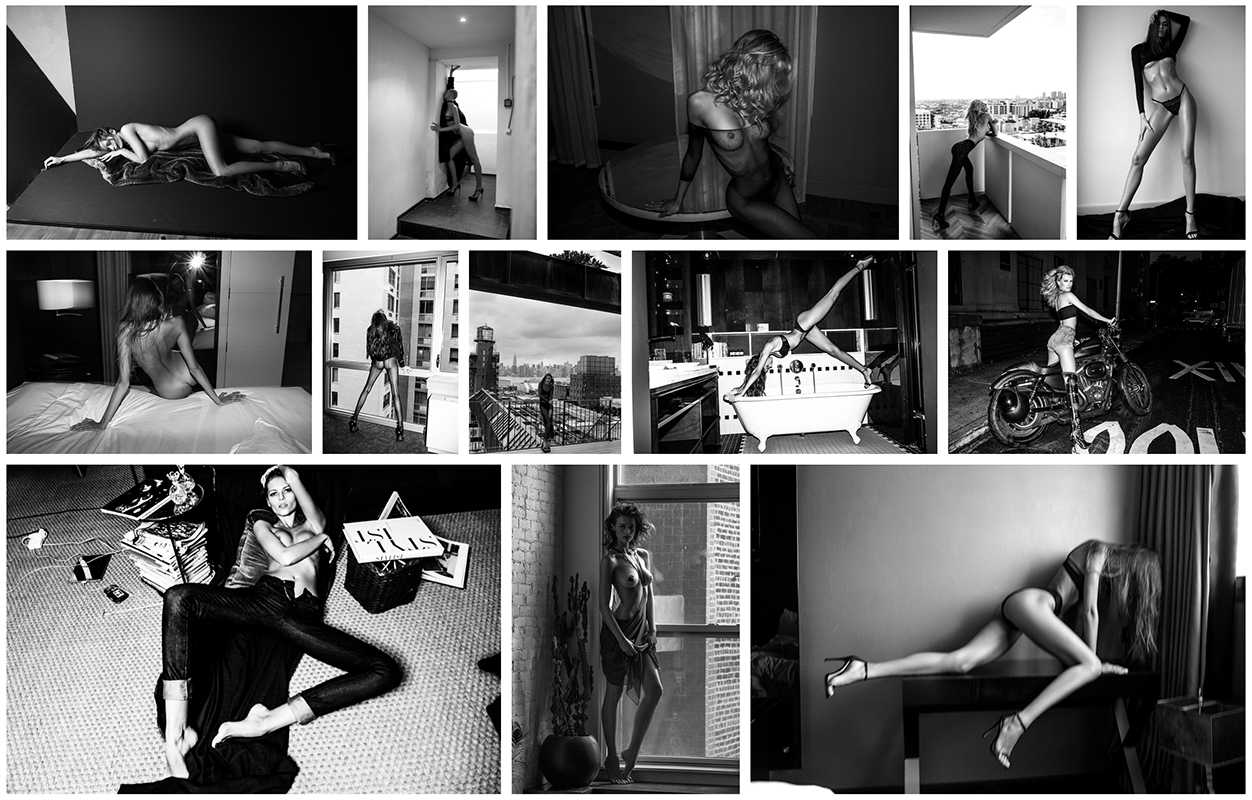
Very often, during photo shoots, I conduct an initial selection of photos right on the spot. I review the shots to get a general idea of the work done and eliminate technically unsuccessful frames. Intuitively, I also look for the first successful photos that I like and that inspire me to continue shooting even more.
During the review, I focus on composition, lighting and shadows, contrasts, as well as the emotions and mood conveyed by the model and how poses look visually striking. Photos on the camera are like sketches or drafts to me, so I'm not always ready to show them.
This process of initial selection is often based on emotions as I'm in the midst of the shoot and may not always be objective in the context of the entire session. However, striving for objectivity is not the goal; the main thing is to maintain the pace and dynamics of the shoot.
There are times when the photos I liked during the shoot don't always make it to the final selection when I later go through the material. Sometimes photos need time for everything to settle, including emotional involvement in the creative process of finding the right shots.
During commercial shoots, photos are often displayed on a monitor for the team or client to observe the results in real time. In this case, photos on the camera and on the screen may look and be perceived differently.
The advantages of this approach are that you have greater control over the process, and displaying the images helps ensure that everything is going according to plan. You and your team can quickly identify and rectify any mistakes.
However, there are also drawbacks. It may lead to a loss of the shooting's dynamics and the magic of the creative process, as well as the risk of falling into the trap of comments and opinions from the team and clients. It's important to determine which team members will be involved in the review and selection process.
During the review, I focus on composition, lighting and shadows, contrasts, as well as the emotions and mood conveyed by the model and how poses look visually striking. Photos on the camera are like sketches or drafts to me, so I'm not always ready to show them.
This process of initial selection is often based on emotions as I'm in the midst of the shoot and may not always be objective in the context of the entire session. However, striving for objectivity is not the goal; the main thing is to maintain the pace and dynamics of the shoot.
There are times when the photos I liked during the shoot don't always make it to the final selection when I later go through the material. Sometimes photos need time for everything to settle, including emotional involvement in the creative process of finding the right shots.
During commercial shoots, photos are often displayed on a monitor for the team or client to observe the results in real time. In this case, photos on the camera and on the screen may look and be perceived differently.
The advantages of this approach are that you have greater control over the process, and displaying the images helps ensure that everything is going according to plan. You and your team can quickly identify and rectify any mistakes.
However, there are also drawbacks. It may lead to a loss of the shooting's dynamics and the magic of the creative process, as well as the risk of falling into the trap of comments and opinions from the team and clients. It's important to determine which team members will be involved in the review and selection process.
04. UNIT POST-PRODUCTION / CROPPING


Cropping is a powerful tool in retouching photographs as it allows me to create a completely new composition that can better express the message and the emotion I am trying to convey. By cropping an image, I can remove any unnecessary or distracting elements and focus the viewer's attention on the most important part of the image. It allows me to emphasize specific details and create a stronger sense of balance and harmony.
However, it's important to use cropping intentionally and with care, as it can significantly change the meaning and impact of the original photograph. By cropping an image, I am essentially deciding what the viewer will see and how they will interpret the image. This responsibility requires a deep understanding of the message I am trying to convey and a sensitivity to the impact of each decision I make during the retouching process. Overall, the power of cropping lies in its ability to transform an image into a new and more powerful work of art that can communicate ideas and emotions in a profound way.
However, it's important to use cropping intentionally and with care, as it can significantly change the meaning and impact of the original photograph. By cropping an image, I am essentially deciding what the viewer will see and how they will interpret the image. This responsibility requires a deep understanding of the message I am trying to convey and a sensitivity to the impact of each decision I make during the retouching process. Overall, the power of cropping lies in its ability to transform an image into a new and more powerful work of art that can communicate ideas and emotions in a profound way.
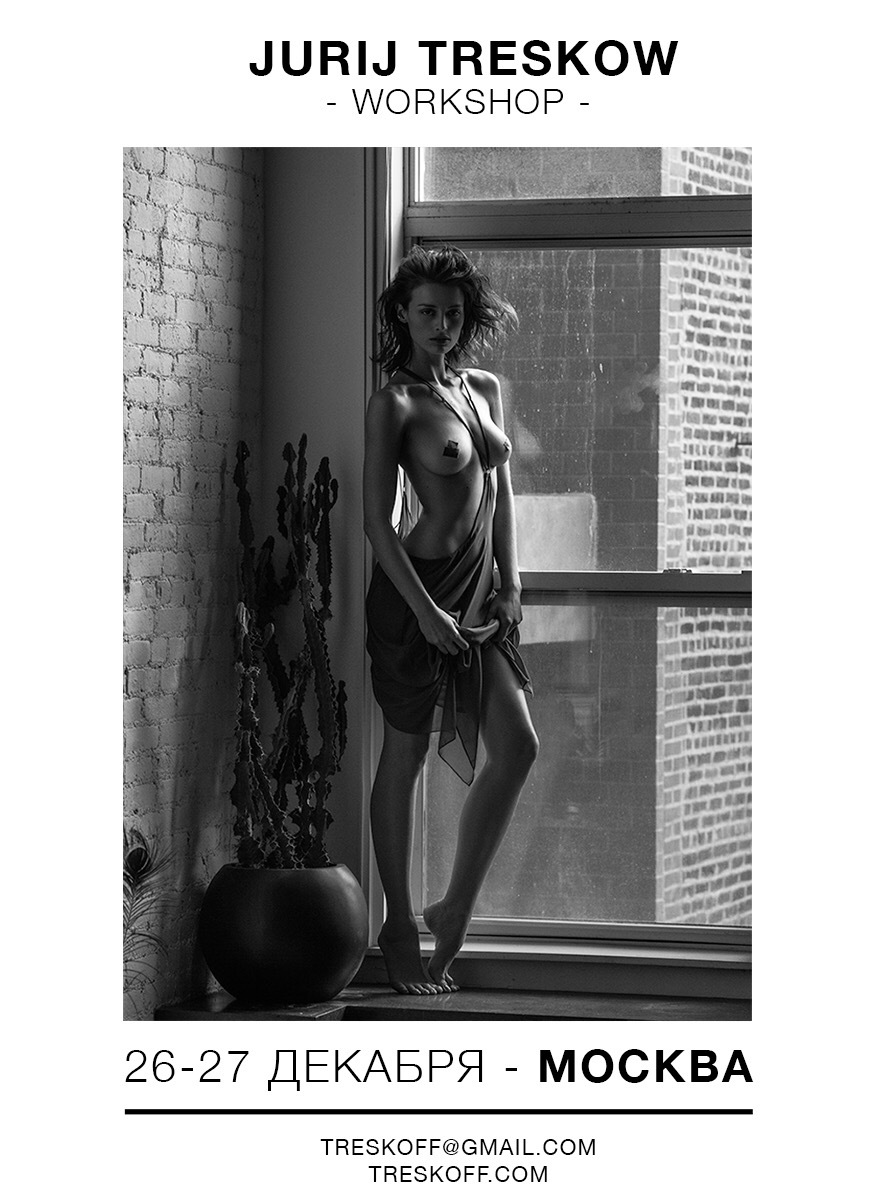
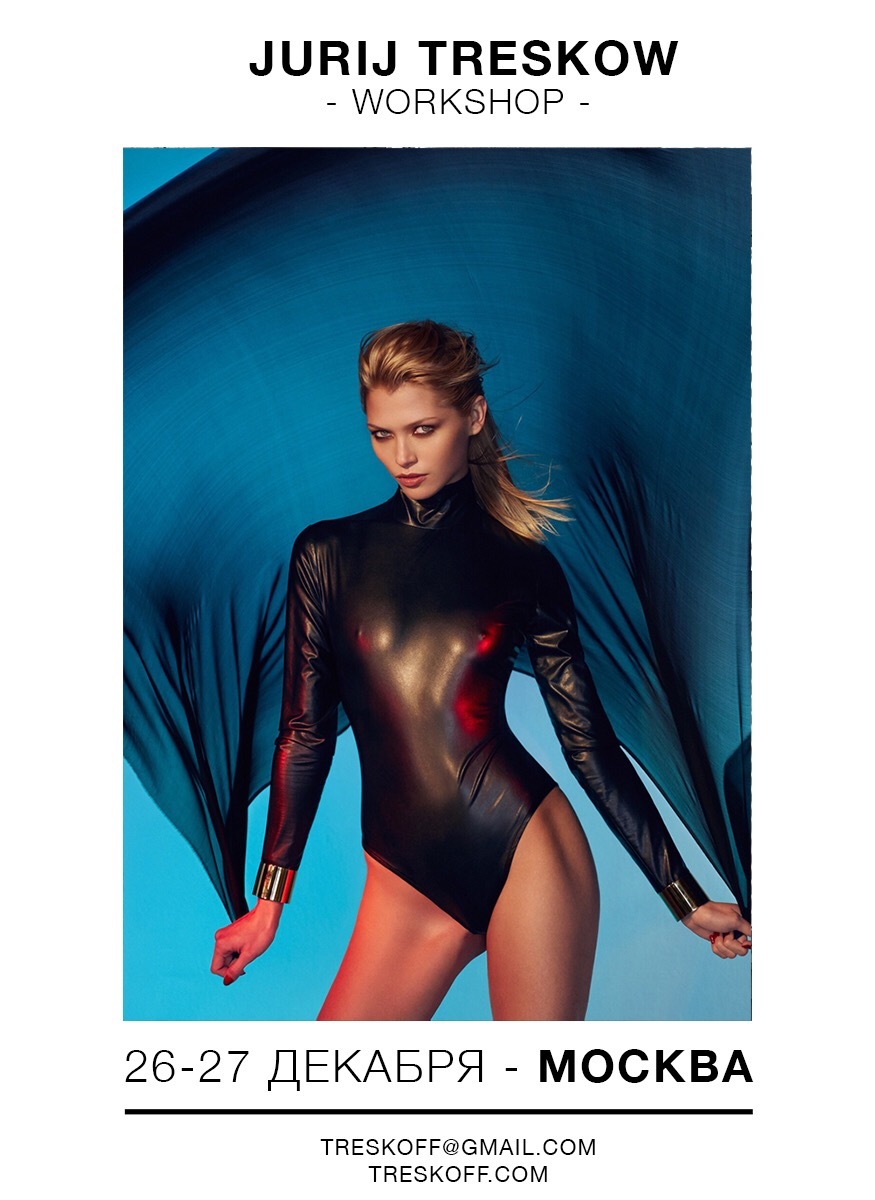
In 2011, I held my first lecture in Minsk, and after announcing it on Facebook, I was pleasantly surprised to receive over 60 applications to participate. At that time, I had been actively involved in photography for about 4 years, and I had enough material for a two-hour lecture.
During the lecture, I shared my experience of photoshoots in Paris, Moscow, and Berlin, and I was thrilled to receive a lot of positive feedback and questions from the engaged audience. It was very rewarding to see their eagerness to learn about my journey as a photographer working in different cities.
Since then, I have given more than 15 lectures in Moscow, St. Petersburg, and Minsk. Later on, I came up with the idea of launching an educational online platform, and I was glad that over 100 students have taken my individual online courses.
I have always considered giving lectures and sharing my knowledge an important and meaningful aspect of my photography. It is a great tool to review my own path and structure my experience in photography. The preparation for my lectures usually takes several weeks. I feel a responsibility towards the people who pay to attend my lectures, and I strive to remain authentic, open, and sincere to be effective and valuable to my audience.
My main goal is to create a product that would personally interest me.
During the lecture, I shared my experience of photoshoots in Paris, Moscow, and Berlin, and I was thrilled to receive a lot of positive feedback and questions from the engaged audience. It was very rewarding to see their eagerness to learn about my journey as a photographer working in different cities.
Since then, I have given more than 15 lectures in Moscow, St. Petersburg, and Minsk. Later on, I came up with the idea of launching an educational online platform, and I was glad that over 100 students have taken my individual online courses.
I have always considered giving lectures and sharing my knowledge an important and meaningful aspect of my photography. It is a great tool to review my own path and structure my experience in photography. The preparation for my lectures usually takes several weeks. I feel a responsibility towards the people who pay to attend my lectures, and I strive to remain authentic, open, and sincere to be effective and valuable to my audience.
My main goal is to create a product that would personally interest me.
There are a plethora of sources available for lectures and masterclasses on photography.
MasterClass: A subscription-based platform featuring courses taught by industry professionals, including renowned photographers such as Annie Leibovitz and Jimmy Chin.
CreativeLive: Offers free and paid online classes and workshops taught by top photographers, with topics ranging from beginner to advanced levels.
Nikon School Online: Offers a variety of online photography courses, including lighting, landscapes, and portraiture, and they're free of charge.
Canon Online Learning: Provides a range of online photography courses, covering a variety of topics, including camera basics, advanced lighting, and post-production editing.
TED Talks: Features a variety of inspirational talks by photographers and creatives, including Iwan Baan, Chase Jarvis, and Sebastião Salgado.
YouTube: A treasure trove of free photography tutorials and masterclasses, featuring channels like B&H Photo Video, Adorama, and The Art of Photography.
Photography Schools and Universities: Many photography schools and universities offer lectures, workshops, and masterclasses open to the public, such as the International Center of Photography in New York City and the Royal Academy of Fine Arts in Antwerp, Belgium.
Local Photography Clubs and Societies: Check out local photography clubs and societies in your area, which often host lectures, workshops, and other events for members.
MasterClass: A subscription-based platform featuring courses taught by industry professionals, including renowned photographers such as Annie Leibovitz and Jimmy Chin.
CreativeLive: Offers free and paid online classes and workshops taught by top photographers, with topics ranging from beginner to advanced levels.
Nikon School Online: Offers a variety of online photography courses, including lighting, landscapes, and portraiture, and they're free of charge.
Canon Online Learning: Provides a range of online photography courses, covering a variety of topics, including camera basics, advanced lighting, and post-production editing.
TED Talks: Features a variety of inspirational talks by photographers and creatives, including Iwan Baan, Chase Jarvis, and Sebastião Salgado.
YouTube: A treasure trove of free photography tutorials and masterclasses, featuring channels like B&H Photo Video, Adorama, and The Art of Photography.
Photography Schools and Universities: Many photography schools and universities offer lectures, workshops, and masterclasses open to the public, such as the International Center of Photography in New York City and the Royal Academy of Fine Arts in Antwerp, Belgium.
Local Photography Clubs and Societies: Check out local photography clubs and societies in your area, which often host lectures, workshops, and other events for members.
04. UNIT POST-PRODUCTION / PRINT YOUR WORK

Over time, the printing of my works has become an important element in the development of my creative journey. It helps me see my photographs in a different light and opens up possibilities that I may not have realized before.
Printed works have a completely different status and are perceived differently. I can pay attention to details that may not be visible on a phone or computer screen. It's a different format, a different level of quality in perceiving the frame and evaluating what works and what doesn't.
When I print my photographs, I observe how colors and tones are reproduced on paper, which may differ from what I saw on a digital screen. It may be necessary to adjust color saturation and contrast to achieve the desired look in print. This requires learning or working with professionals in the field.
Undoubtedly, black and white photography can be simpler to print. But there are nuances there as well.
For my exhibitions and books, I use different approaches to printing and presentation to emphasize the impact of my works. Even showcasing my portfolio with printed works for potential clients is much more impressive than digital images.
Printed works have a completely different status and are perceived differently. I can pay attention to details that may not be visible on a phone or computer screen. It's a different format, a different level of quality in perceiving the frame and evaluating what works and what doesn't.
When I print my photographs, I observe how colors and tones are reproduced on paper, which may differ from what I saw on a digital screen. It may be necessary to adjust color saturation and contrast to achieve the desired look in print. This requires learning or working with professionals in the field.
Undoubtedly, black and white photography can be simpler to print. But there are nuances there as well.
For my exhibitions and books, I use different approaches to printing and presentation to emphasize the impact of my works. Even showcasing my portfolio with printed works for potential clients is much more impressive than digital images.
04. UNIT POST-PRODUCTION / POLAROIDS


Polaroids distinguish themselves in the photography world, especially amidst digital advancements. Their immediate development and unalterable nature give these images a genuine allure, capturing moments with unmatched directness.
Each Polaroid is irreplaceable, with no possibility of duplication, making every shot unique. The characteristic faded colors, soft focus, and iconic white borders contribute to their intimate and genuine feel, capturing moments in their truest form.
Photographers often incorporate Polaroids into their work for their distinctiveness and authenticity, enhancing their portfolios with a touch of originality.
The significance of Polaroids in photography is profound. They evoke a sense of nostalgia and timelessness, offering a raw and intimate glimpse of reality. Their appeal extends to collectors and enthusiasts for their exceptional qualities.
The process of using Polaroids adds a layer of intentionality to photography. The limited shots and associated costs encourage thoughtful composition. The anticipation during the brief development time and the physical interaction with the final image add to its charm. It's a blend of artistic intuition and the unique capabilities of Polaroid technology, creating a memorable and engaging experience.
Each Polaroid is irreplaceable, with no possibility of duplication, making every shot unique. The characteristic faded colors, soft focus, and iconic white borders contribute to their intimate and genuine feel, capturing moments in their truest form.
Photographers often incorporate Polaroids into their work for their distinctiveness and authenticity, enhancing their portfolios with a touch of originality.
The significance of Polaroids in photography is profound. They evoke a sense of nostalgia and timelessness, offering a raw and intimate glimpse of reality. Their appeal extends to collectors and enthusiasts for their exceptional qualities.
The process of using Polaroids adds a layer of intentionality to photography. The limited shots and associated costs encourage thoughtful composition. The anticipation during the brief development time and the physical interaction with the final image add to its charm. It's a blend of artistic intuition and the unique capabilities of Polaroid technology, creating a memorable and engaging experience.
04. UNIT POST-PRODUCTION / VIDEO

Polaroids distinguish themselves in the photography world, especially amidst digital advancements. Their immediate development and unalterable nature give these images a genuine allure, capturing moments with unmatched directness.
Each Polaroid is irreplaceable, with no possibility of duplication, making every shot unique. The characteristic faded colors, soft focus, and iconic white borders contribute to their intimate and genuine feel, capturing moments in their truest form.
Photographers often incorporate Polaroids into their work for their distinctiveness and authenticity, enhancing their portfolios with a touch of originality.
The significance of Polaroids in photography is profound. They evoke a sense of nostalgia and timelessness, offering a raw and intimate glimpse of reality. Their appeal extends to collectors and enthusiasts for their exceptional qualities.
The process of using Polaroids adds a layer of intentionality to photography. The limited shots and associated costs encourage thoughtful composition. The anticipation during the brief development time and the physical interaction with the final image add to its charm. It's a blend of artistic intuition and the unique capabilities of Polaroid technology, creating a memorable and engaging experience.
Each Polaroid is irreplaceable, with no possibility of duplication, making every shot unique. The characteristic faded colors, soft focus, and iconic white borders contribute to their intimate and genuine feel, capturing moments in their truest form.
Photographers often incorporate Polaroids into their work for their distinctiveness and authenticity, enhancing their portfolios with a touch of originality.
The significance of Polaroids in photography is profound. They evoke a sense of nostalgia and timelessness, offering a raw and intimate glimpse of reality. Their appeal extends to collectors and enthusiasts for their exceptional qualities.
The process of using Polaroids adds a layer of intentionality to photography. The limited shots and associated costs encourage thoughtful composition. The anticipation during the brief development time and the physical interaction with the final image add to its charm. It's a blend of artistic intuition and the unique capabilities of Polaroid technology, creating a memorable and engaging experience.
04. UNIT POST-PRODUCTION / EXHIBITIONS
FATAL PRACTICE
multi-platform concept combining art exhibitions, live performances and digital explorations
visionary world of experimental engagements in cinematic settings
ENTER
THAT WAS 5 % FROM 04. UNIT
PLANS & PRICING
select the plan that suits you best
More products
Q & A
by jurij treskow